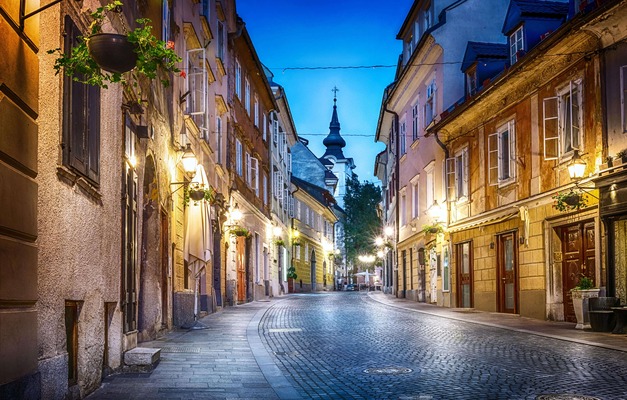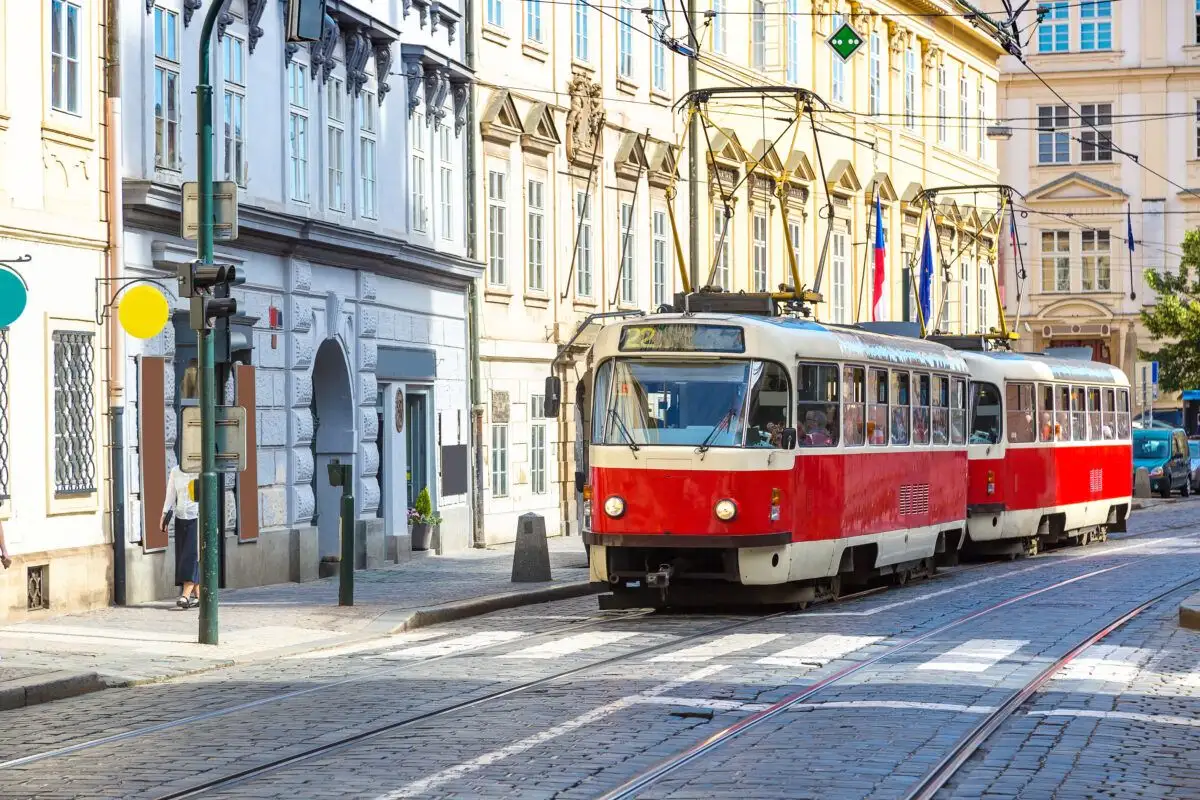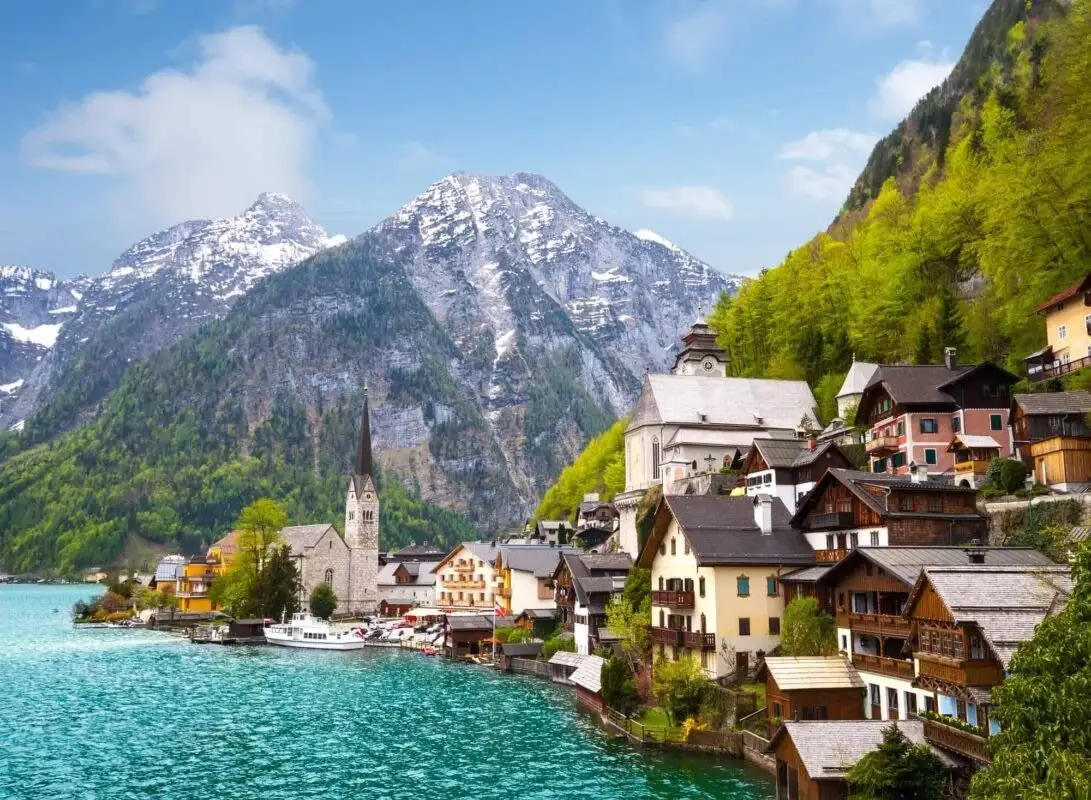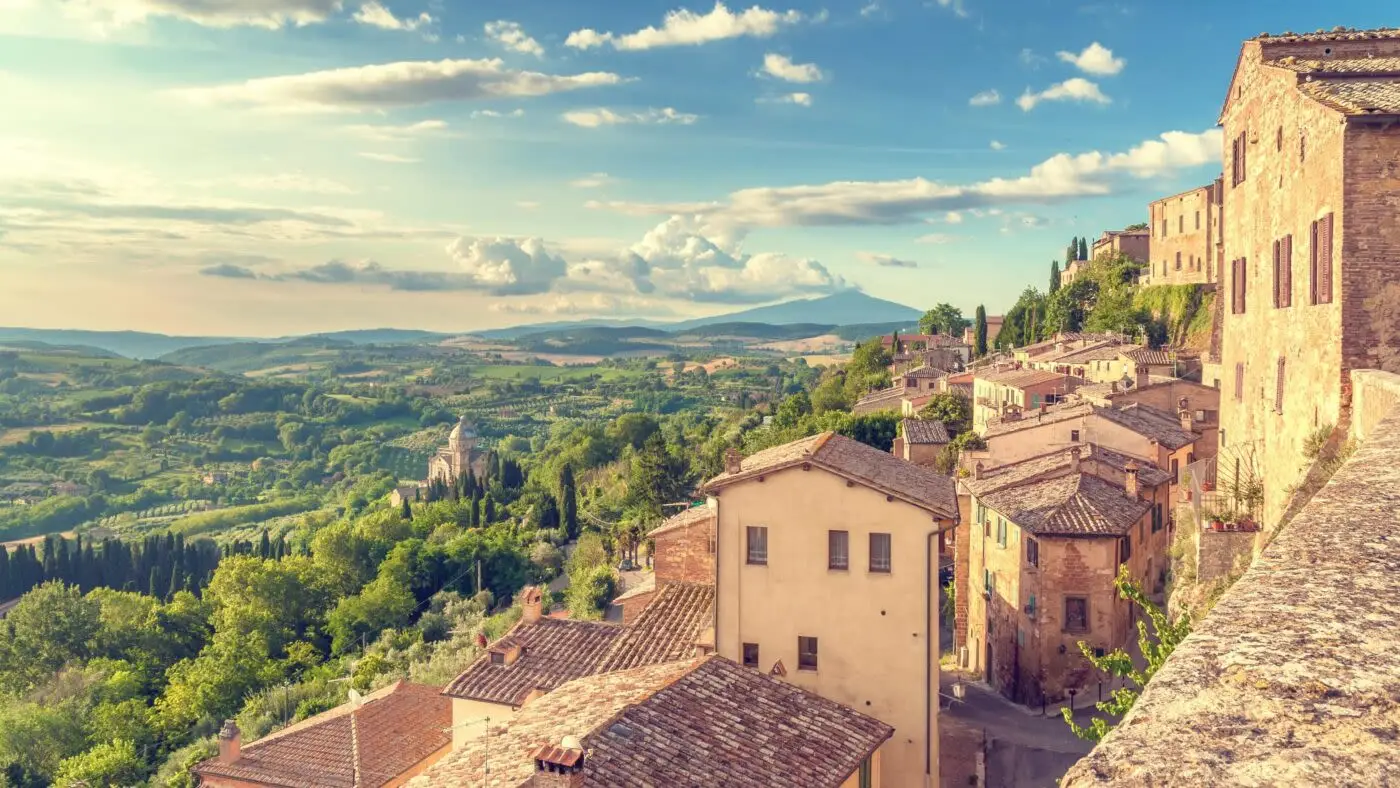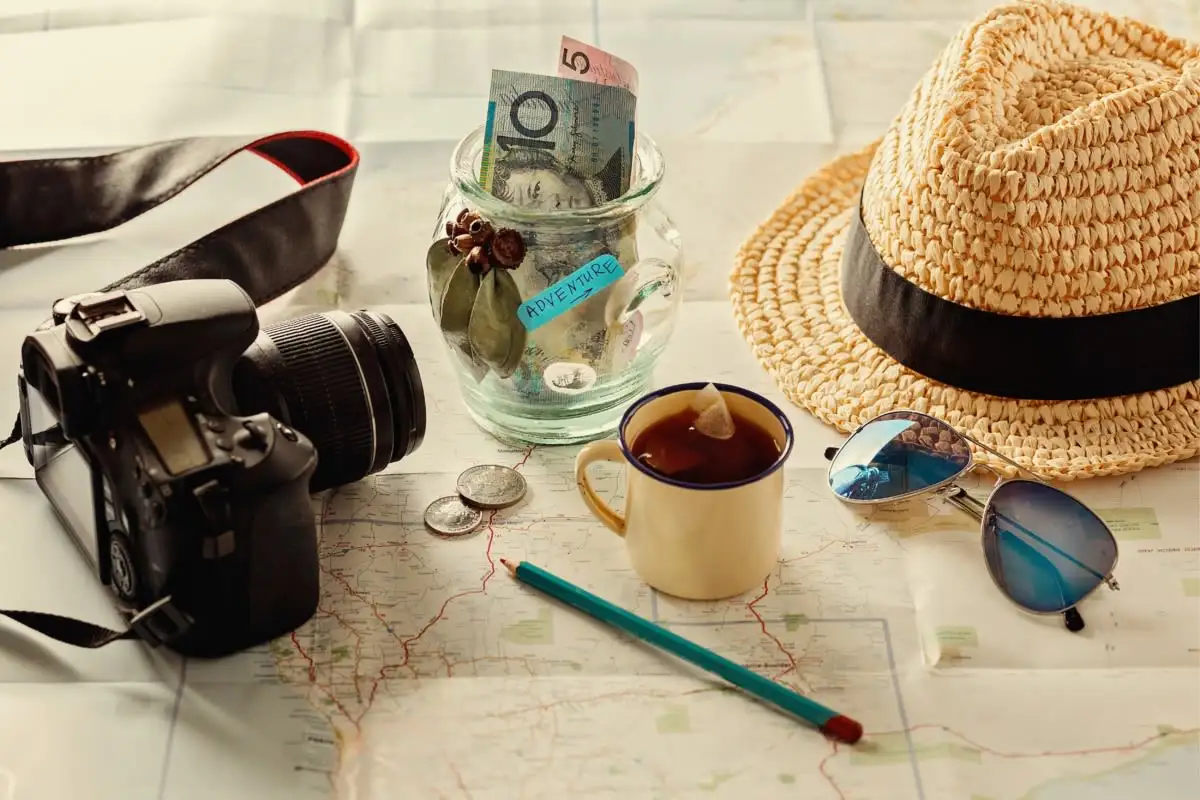
2-Week In-Depth Journey Through Portugal: From Lisbon to Porto
 14 Day Tour of Lisbon and Porto
14 Day Tour of Lisbon and Porto
Overview
Trip Map
Itinerary
Inclusions
Reviews







14 Days 13 Nights
Best Time: Jan-Dec
Exploring Scenic Countryside
Local Cuisine & Wine
Over 14 unforgettable days, this journey reveals the heart of Portugal, from Lisbon's historic charm to Porto's riverside beauty, enriched with excursions to some of the country's most enchanting destinations. Explore the fairytale palaces of Sintra, the coastal allure of Setúbal, and the serene vineyards of the Douro River Valley. Enjoy exclusive guided tours of Porto and Lisbon’s Bairro Alto, savor regional wines and cuisine, and discover UNESCO World Heritage sites. With our cutting-edge mobile app providing detailed travel guidance, this isn’t just a trip—it’s your gateway to Portugal’s most captivating treasures.
- Enjoy guided walks with locals through colorful neighborhoods in Lisbon & Porto, such as Bairro Alto
- Take an excursion to enchanting Sintra, where palaces and lush landscapes create a magical setting.
- Explore the scenic Douro Valley on a day trip that reveals lush vineyards growing world-class wines.
- Discover scenic small towns, including self-guided excursions to Guimarães and Matosinhos.
- Experience the Atlantic Coast with a visit to Cascais and to Aveiro, known as the Portuguese Venice.
Over 14 unforgettable days, this journey reveals the heart of Portugal, from Lisbon's historic charm to Porto's riverside beauty, enriched with excursions to some of the country's most enchanting destinations. Explore the fairytale palaces of Sintra, the coastal allure of Setúbal, and the serene vineyards of the Douro River Valley. Enjoy exclusive guided tours of Porto and Lisbon’s Bairro Alto, savor regional wines and cuisine, and discover UNESCO World Heritage sites. With our cutting-edge mobile app providing detailed travel guidance, this isn’t just a trip—it’s your gateway to Portugal’s most captivating treasures.
- Enjoy guided walks with locals through colorful neighborhoods in Lisbon & Porto, such as Bairro Alto
- Take an excursion to enchanting Sintra, where palaces and lush landscapes create a magical setting.
- Explore the scenic Douro Valley on a day trip that reveals lush vineyards growing world-class wines.
- Discover scenic small towns, including self-guided excursions to Guimarães and Matosinhos.
- Experience the Atlantic Coast with a visit to Cascais and to Aveiro, known as the Portuguese Venice.

Baixa
Neighborhood

Praça do Comércio
Architecture

Jerónimos Monastery

Belém Tower
Architecture

St. George's Castle
Castles & Chateaux

Ribeira Square
Neighborhood

Porto Cathedral
Churches & Monasteries

Porto Wine Cellars of Gaia

Clerigos Tower
Must see sights

Baixa
Neighborhood

Praça do Comércio
Architecture

Jerónimos Monastery

Belém Tower
Architecture

St. George's Castle
Castles & Chateaux

Ribeira Square
Neighborhood

Porto Cathedral
Churches & Monasteries

Porto Wine Cellars of Gaia

Clerigos Tower
Starting from
$2259
per person
 Not included
Not included Secure Your Customizable Trip
Enter your details to embark on a journey that can be tailored just for you.
Start
Travelers
0 travelers
Add Room
Remove Room
Preferred Hotel Stars
Select Hotel Stars
Craft Your Own Itinerary
Select your interests and destinations for a trip plan inspired by you.
Portugal’s Grand Tour Trip - Map & Itinerary
Enable/Disable Map Scrolling
Click To Make Map Interactive

Portugal’s Grand Tour Trip Timeline
 Edit Details
Edit DetailsArrival
5 nights
Lisbon
Portugal
Train: 3h
8 nights
Porto
Portugal
Departure
Day-By-Day Itinerary of Portugal’s Grand Tour Trip
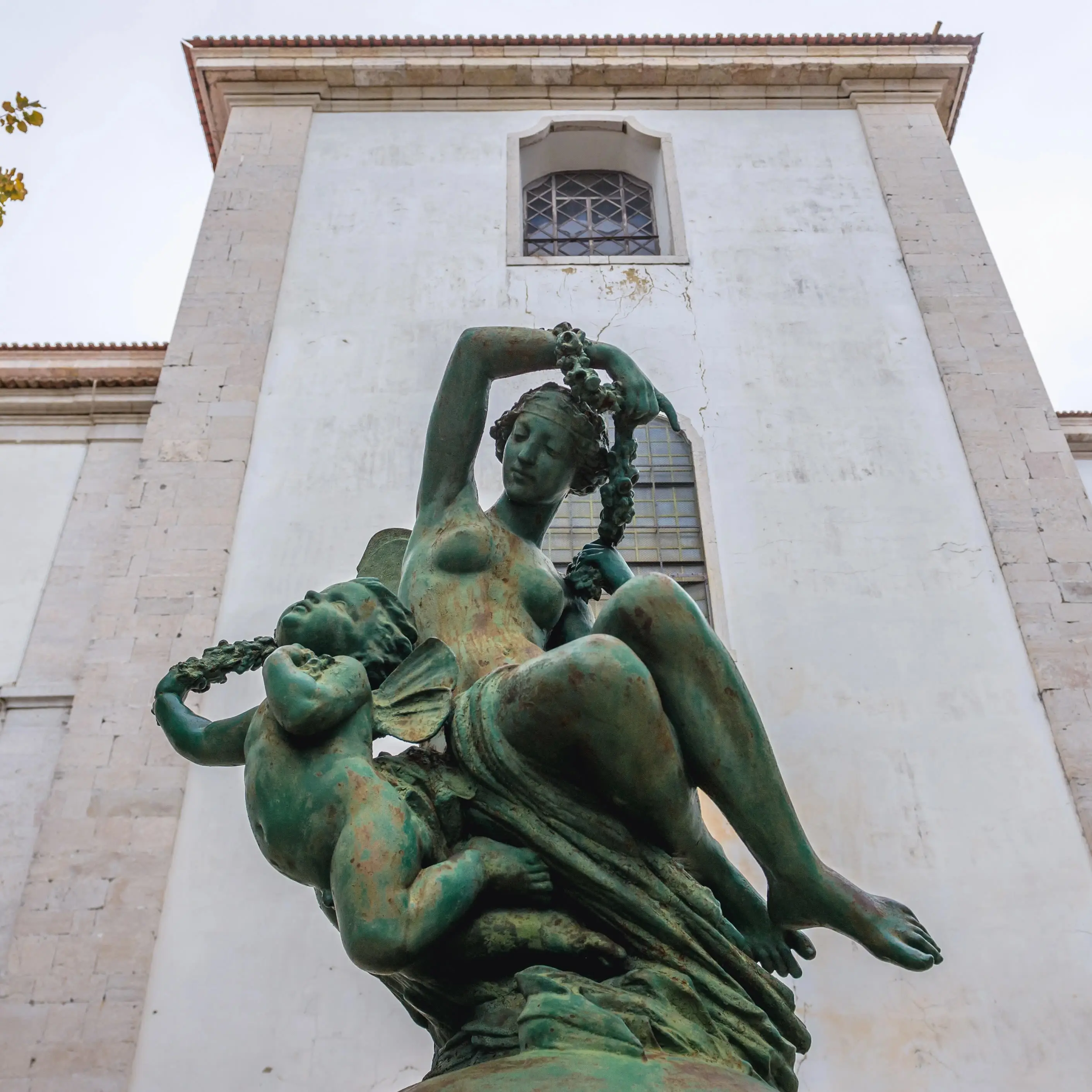
Day 1
Arrive Lisbon
Day 1
Arrive Lisbon



To Be Determined
Taxi from Airport
Lisbon has one main airport, Aeroporto Humberto Delgado. The most affordable way from the airport to central Lisbon is by the Metro Red Line, up to a 40-minute ride. Oftern quicker are taxis, Ubers and Bolts. Taxi may be pick up by the stands directly outside your terminal and Uber and Bolt can pick up people at the airport (with certain complications). You can also arrange a private transfer. A ride to the city center will take 20-40 minutes depending on traffic and will cost between 12-25€ for a taxi.

Day 1
Arrive Lisbon


Day 1
Arrive Lisbon




To Be Determined:
Taxi from Airport
Mid-Day to Late Afternoon:
Graca & Alfama
Late Afternoon/Early Evening:
Baixa


Day 2
Lisbon
Day 2
Lisbon


Morning/Mid-Day
Tile Museum
This is a beautiful visit... Just a little outside the main tourist destinations rest a museum central to Portuguese expression, the National Tile Museum. The museum recounts the importance of azulejos (pronounced AH-zoo-lay-zho) in Portugal. Azulejos can be traced back to their introduction during the 15th century, incorporating past influences of the Moors, who brought the technique from North Africa. (Decorative tiles themselves go back much farther, making an appearance at least as early as almost 5000 years ago in Egypt.) Over time, Portuguese artisans developed their own styles, incorporating local motifs, religious themes, and historical events into the designs. Azulejos became a means of storytelling, capturing significant moments in Portugal's history and everyday life. Their widespread use also demonstrates the country's cultural exchanges during the Age of Exploration, reflecting influences from Asia, Africa, and the Americas. Azulejos are celebrated for their artistic merit, showcasing intricate patterns and vibrant colors that enhance the architectural beauty of Portuguese cities. Today, azulejos remain a symbol of national pride, preserving Portugal's historical narratives and artistic achievements while continuing to inspire contemporary art and design. All these aspects and more are beautifully illustrated at the museum, housed in the former Franciscan convent of the Madre de Deus (Convent of the Mother of God). The structure still boasts the otherworldly splendor of the gold-leafed church and choir. This visit is truly a feast for the eyes.

Day 2
Lisbon



Day 3
Lisbon
Day 3
Lisbon

Morning to Afternoon
Excursion to Setubal
Setúbal, a sun-drenched coastal city in Portugal, is renowned for its sea-faring heritage, delectable seafood, and scenic beauty. Located just south of Lisbon, Setúbal boasts a charming old town with narrow, cobbled streets, historic buildings, and lively markets. Key attractions include the impressive São Filipe Fortress, offering panoramic views of the city and the Sado River, and the bustling Livramento Market, famous for its fresh fish and regional faretiles. Nature lovers will appreciate the nearby Arrábida Natural Park, with its lush landscapes and pristine beaches, including the serene Albarquel Beach. Setúbal's maritime culture, combined with its natural and historical attractions, makes it a delightful destination for travelers seeking a blend of urban and outdoor experiences.

Fortress of Sao Filipo
Show More
Show More


The Beaches of Setúbal / Albarquel Urban Park
One does not have to travel far in Setúbal to find a good beach!
Show More

Livramento Market
One of the top fish markets in Europe, but it's not limited to just that.
Show More

Fortress of Sao Filipo
Show More
Show More


The Beaches of Setúbal / Albarquel Urban Park
One does not have to travel far in Setúbal to find a good beach!
Show More

Livramento Market
One of the top fish markets in Europe, but it's not limited to just that.
Show More

Fortress of Sao Filipo
Show More
Show More

prev
next

Day 3
Lisbon


Fortress of Sao Filipo
 Highlight of Excursion to Setubal
Highlight of Excursion to Setubal
São Filipe Fortress is a remarkable 16th-century military stronghold that offers views of the Atlantic and the region's storied past. Constructed under the reign of King Philip II of Spain, the fortress played a key role in defending the strategic Sado River and the town of Setúbal from maritime threats. Visitors can explore its well-preserved walls, bastions, and barracks, and marvel at the intricate azulejo tiles depicting religious scenes in the chapel. Perched atop a hill, the fortress provides panoramic views of Setúbal, the Atlantic Ocean, and the lush Arrábida Natural Park. A visit to São Filipe Fortress combines historical intrigue with stunning scenery, making it a must-see destination in Setúbal.
The Beaches of Setúbal / Albarquel Urban Park
 Highlight of Excursion to Setubal
Highlight of Excursion to SetubalOne does not have to travel far in Setúbal to find a good beach!
Albarquel Urban Park is coastal retreat known for its golden sands and crystal-clear waters. Nestled at the edge of the Arrábida Natural Park, the city park offers a tranquil escape surrounded by lush greenery and dramatic limestone cliffs. Albarquel and Saúde beaches are popular among locals and visitors alike for their calm waters, making them ideal for swimming and paddleboarding. The beach's well-maintained facilities include a café, restrooms, and picnic areas, ensuring a comfortable visit. With its stunning natural beauty and peaceful ambiance, Albarquel Urban Park is a perfect spot for relaxation and enjoying the scenic views of the Sado River estuary.

Livramento Market
 Highlight of Excursion to Setubal
Highlight of Excursion to SetubalOne of the top fish markets in Europe, but it's not limited to just that.
With a wide range of voluptuous fruit and vegetables, cheese breads and wines, this market hustles from Tuesday until Sunday, filled with tourists and locals alike. A stop here will show the culinary riches of Setubal and its region, including Queijo de Azeitão, grapes, melons, and Setubal wines, generally sweet and powerfully complex. While you probably will not buy fish to take back to Lisbon, you can go to the restaurants surrounding the market to try some fine, grilled specimens.

Fortress of Sao Filipo
 Highlight of Excursion to Setubal
Highlight of Excursion to Setubal
São Filipe Fortress is a remarkable 16th-century military stronghold that offers views of the Atlantic and the region's storied past. Constructed under the reign of King Philip II of Spain, the fortress played a key role in defending the strategic Sado River and the town of Setúbal from maritime threats. Visitors can explore its well-preserved walls, bastions, and barracks, and marvel at the intricate azulejo tiles depicting religious scenes in the chapel. Perched atop a hill, the fortress provides panoramic views of Setúbal, the Atlantic Ocean, and the lush Arrábida Natural Park. A visit to São Filipe Fortress combines historical intrigue with stunning scenery, making it a must-see destination in Setúbal.
The Beaches of Setúbal / Albarquel Urban Park
 Highlight of Excursion to Setubal
Highlight of Excursion to SetubalOne does not have to travel far in Setúbal to find a good beach!
Albarquel Urban Park is coastal retreat known for its golden sands and crystal-clear waters. Nestled at the edge of the Arrábida Natural Park, the city park offers a tranquil escape surrounded by lush greenery and dramatic limestone cliffs. Albarquel and Saúde beaches are popular among locals and visitors alike for their calm waters, making them ideal for swimming and paddleboarding. The beach's well-maintained facilities include a café, restrooms, and picnic areas, ensuring a comfortable visit. With its stunning natural beauty and peaceful ambiance, Albarquel Urban Park is a perfect spot for relaxation and enjoying the scenic views of the Sado River estuary.

Livramento Market
 Highlight of Excursion to Setubal
Highlight of Excursion to SetubalOne of the top fish markets in Europe, but it's not limited to just that.
With a wide range of voluptuous fruit and vegetables, cheese breads and wines, this market hustles from Tuesday until Sunday, filled with tourists and locals alike. A stop here will show the culinary riches of Setubal and its region, including Queijo de Azeitão, grapes, melons, and Setubal wines, generally sweet and powerfully complex. While you probably will not buy fish to take back to Lisbon, you can go to the restaurants surrounding the market to try some fine, grilled specimens.

Fortress of Sao Filipo
 Highlight of Excursion to Setubal
Highlight of Excursion to Setubal
São Filipe Fortress is a remarkable 16th-century military stronghold that offers views of the Atlantic and the region's storied past. Constructed under the reign of King Philip II of Spain, the fortress played a key role in defending the strategic Sado River and the town of Setúbal from maritime threats. Visitors can explore its well-preserved walls, bastions, and barracks, and marvel at the intricate azulejo tiles depicting religious scenes in the chapel. Perched atop a hill, the fortress provides panoramic views of Setúbal, the Atlantic Ocean, and the lush Arrábida Natural Park. A visit to São Filipe Fortress combines historical intrigue with stunning scenery, making it a must-see destination in Setúbal.
prev
next


Day 4
Lisbon
Day 4
Lisbon


Morning to Afternoon
Belém
Have your own Age of Discovery in this visit to Belém This picturesque district, situated near where the Tagus River reaches the Atlantic, is renowned for architectural marvels like the the Jerónimos Monastery, an exquisite example of Manueline architecture, and the burial place of Portuguese explorer Vasco de Gama. Follow this with a stroll by the iconic Belém Tower. Both are UNESCO World Heritage Sites. Continue that scenic walk along the waterfront to the Monument to the Discoveries, which honors Portugal'sGlobe-sailing exploits. Don't miss the chance to savor the world-famous Pastéis de Belém at the historic bakery. Conclude your visit with a trip to the Belém Cultural Center, where contemporary art and performances enrich your experience. Belém seamlessly blends history, culture, and culinary delights, making it a must-visit destination in Lisbon.

Tropical Botanical Garden
Leave the crowds and mid-day sun for leaves and shade in the Tropical Gardens.
Show More

Pastéis de Belém
ONLY HERE are Pastéis de Belém made.
Show More

Jerónimos Monastery
Discover the stunning Jerónimos Monastery, a UNESCO World Heritage site, and one of Lisbon’s most iconic landmarks.
Show More

Belém Tower
Navigate yourself to the historic Belém Tower. (Interiors closed until May 2026)
Show More

Tropical Botanical Garden
Leave the crowds and mid-day sun for leaves and shade in the Tropical Gardens.
Show More

Pastéis de Belém
ONLY HERE are Pastéis de Belém made.
Show More

Jerónimos Monastery
Discover the stunning Jerónimos Monastery, a UNESCO World Heritage site, and one of Lisbon’s most iconic landmarks.
Show More

Belém Tower
Navigate yourself to the historic Belém Tower. (Interiors closed until May 2026)
Show More
prev
next

Day 4
Lisbon


Tropical Botanical Garden
 Highlight of Belém
Highlight of BelémLeave the crowds and mid-day sun for leaves and shade in the Tropical Gardens.
The Tropical Botanical Garden of Lisbon showcases a rich diversity of plant species from around the world. Established in 1906, it was originally designed to study and cultivate plants from Portugal's overseas colonies. Spanning approximately seven hectares, the garden is home to over 500 species of tropical and subtropical plants, including palms, cycads, and exotic trees. As you wander through its serene pathways, you'll encounter rare plants, ponds with water lilies, and a charming greenhouse. The garden also features statues, sculptures, and architectural elements that add to its historic and peaceful atmosphere. It's a perfect escape from the city’s hustle and offers a glimpse into the global reach of Portugal's heritage.

Pastéis de Belém
 Highlight of Belém
Highlight of BelémONLY HERE are Pastéis de Belém made.
The name is patented; the recipe is patented; Pastéis de Belém is a historic pastry shop located in the Belém district of Lisbon, renowned for its rich history and connection to Portuguese culinary traditions. Founded in 1837, this bakery has been crafting its iconic pastries using a closely guarded recipe originally created by the monks of Jerónimos and passed down through generations. The shop's interior exudes old-world charm, with traditional azulejos (ceramic tiles) adorning the walls. A visit to this iconic establishment offers a taste that spans generations.
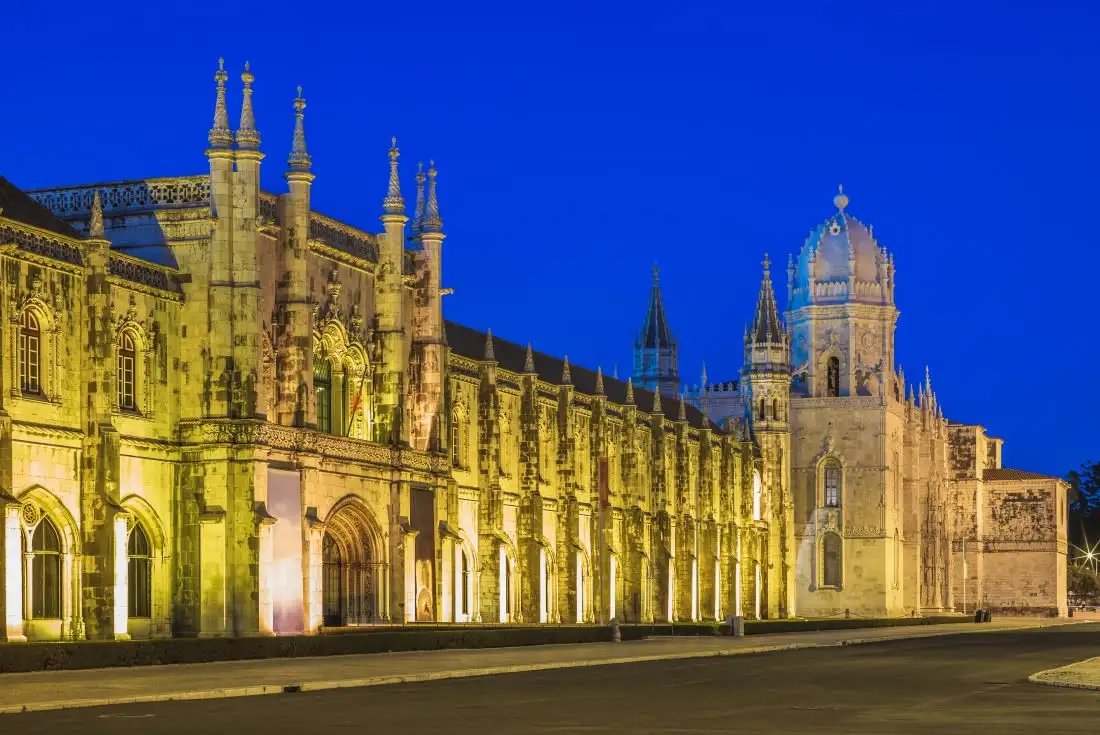
Jerónimos Monastery
 Highlight of Belém
Highlight of BelémDiscover the stunning Jerónimos Monastery, a UNESCO World Heritage site, and one of Lisbon’s most iconic landmarks.
This grand monastery, built in the 16th century, showcases the ornate Manueline style, a uniquely Portuguese blend of Gothic and Renaissance architectural elements. Commissioned by King Manuel I, the monastery was constructed to celebrate Vasco da Gama's successful voyage to India, and it became a symbol of Portugal's Age of Exploration. Visit the Church of Santa Maria, where you can admire the stunning vaulted ceilings and the tombs of famous Portuguese figures, including Vasco da Gama and the poet Luís de Camões. The Jerónimos Monastery stands as a testament to Portugal’s rich history but also offers a serene and inspiring experience for visitors today.
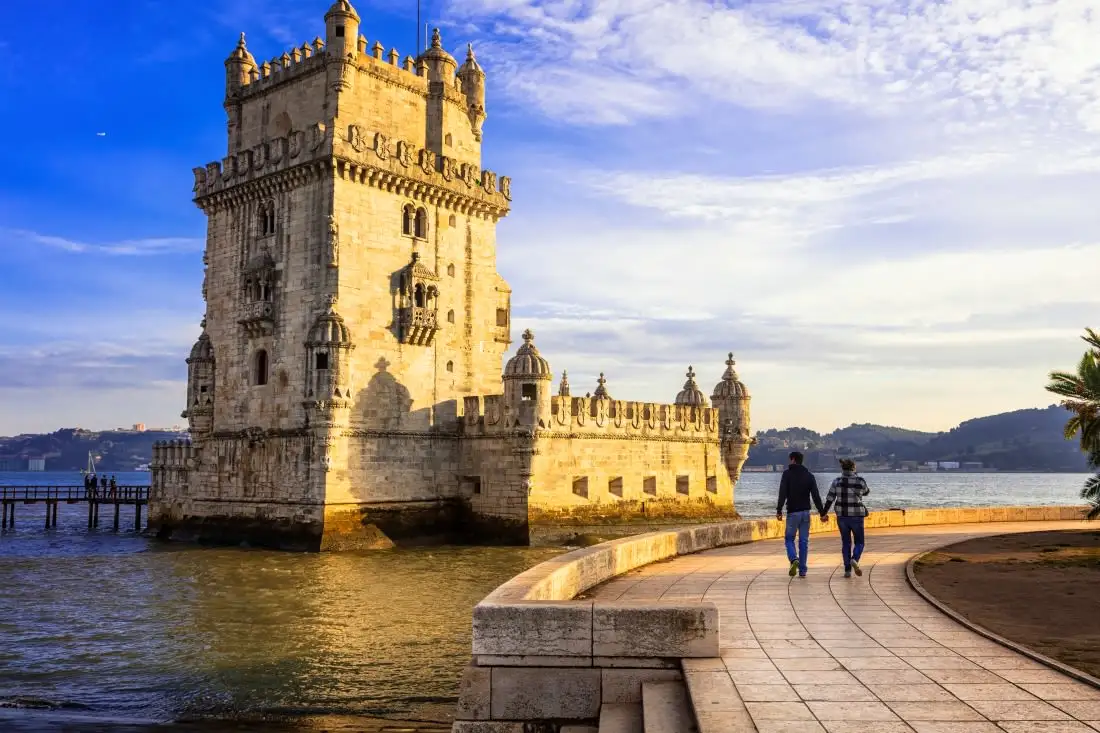
Belém Tower
 Highlight of Belém
Highlight of BelémNavigate yourself to the historic Belém Tower. (Interiors closed until May 2026)
A UNESCO World Heritage site, and a symbol of Portugal's maritime glory during the Age of Exploration, Belém Tower was built in the early 16th century. This fortress was designed to protect the entrance to Lisbon's harbor and to serve as a ceremonial gateway to the city. The tower, with its distinctive Manueline architecture, is adorned with intricate stone carvings, maritime motifs, and the emblem of the Order of Christ, reflecting Portugal's seafaring legacy. Climb to the top of the tower for panoramic views of the Tagus River and imagine Portugal’s pivotal role in global exploration.

Tropical Botanical Garden
 Highlight of Belém
Highlight of BelémLeave the crowds and mid-day sun for leaves and shade in the Tropical Gardens.
The Tropical Botanical Garden of Lisbon showcases a rich diversity of plant species from around the world. Established in 1906, it was originally designed to study and cultivate plants from Portugal's overseas colonies. Spanning approximately seven hectares, the garden is home to over 500 species of tropical and subtropical plants, including palms, cycads, and exotic trees. As you wander through its serene pathways, you'll encounter rare plants, ponds with water lilies, and a charming greenhouse. The garden also features statues, sculptures, and architectural elements that add to its historic and peaceful atmosphere. It's a perfect escape from the city’s hustle and offers a glimpse into the global reach of Portugal's heritage.

Pastéis de Belém
 Highlight of Belém
Highlight of BelémONLY HERE are Pastéis de Belém made.
The name is patented; the recipe is patented; Pastéis de Belém is a historic pastry shop located in the Belém district of Lisbon, renowned for its rich history and connection to Portuguese culinary traditions. Founded in 1837, this bakery has been crafting its iconic pastries using a closely guarded recipe originally created by the monks of Jerónimos and passed down through generations. The shop's interior exudes old-world charm, with traditional azulejos (ceramic tiles) adorning the walls. A visit to this iconic establishment offers a taste that spans generations.

Jerónimos Monastery
 Highlight of Belém
Highlight of BelémDiscover the stunning Jerónimos Monastery, a UNESCO World Heritage site, and one of Lisbon’s most iconic landmarks.
This grand monastery, built in the 16th century, showcases the ornate Manueline style, a uniquely Portuguese blend of Gothic and Renaissance architectural elements. Commissioned by King Manuel I, the monastery was constructed to celebrate Vasco da Gama's successful voyage to India, and it became a symbol of Portugal's Age of Exploration. Visit the Church of Santa Maria, where you can admire the stunning vaulted ceilings and the tombs of famous Portuguese figures, including Vasco da Gama and the poet Luís de Camões. The Jerónimos Monastery stands as a testament to Portugal’s rich history but also offers a serene and inspiring experience for visitors today.

Belém Tower
 Highlight of Belém
Highlight of BelémNavigate yourself to the historic Belém Tower. (Interiors closed until May 2026)
A UNESCO World Heritage site, and a symbol of Portugal's maritime glory during the Age of Exploration, Belém Tower was built in the early 16th century. This fortress was designed to protect the entrance to Lisbon's harbor and to serve as a ceremonial gateway to the city. The tower, with its distinctive Manueline architecture, is adorned with intricate stone carvings, maritime motifs, and the emblem of the Order of Christ, reflecting Portugal's seafaring legacy. Climb to the top of the tower for panoramic views of the Tagus River and imagine Portugal’s pivotal role in global exploration.
prev
next


Day 5
Lisbon
Day 5
Lisbon

Early Morning to Early Evening
Excursion to Sintra
Sintra is a UNESCO World Heritage site renowned for its stunning landscapes and cultural heritage. Often described as a fairytale destination, Sintra boasts a wealth of historical palaces, castles, and gardens that connect them. Wander through the whimsical Pena Palace, with its vibrant colors and eclectic architecture, or explore the mysterious Quinta da Regaleira, known for its enchanting gardens and enigmatic Initiation Well. The town itself is a charming blend of narrow, cobbled streets, busy shops, and delightful cafes. Surrounded by lush forests and offering spectacular views, Sintra is an escape that captivates visitors with its blend of natural beauty and architectural wonders.

The Moorish Castle of Sintra
Add your footsteps to those of kings, guards, lovers and thrill-seekers.
Show More

Quinta da Regaleira
Explore the mysterious grounds of this 19th-century chateau... They were designed to be mysterious.
Show More

National Palace of Pena
Scale the heights to this pleasure-dome of Portuguese Royalty.
Show More

Palace of Sintra
Gain a sense of Portuguese history while wandering this castle's lavish rooms.
Show More

The Moorish Castle of Sintra
Add your footsteps to those of kings, guards, lovers and thrill-seekers.
Show More

Quinta da Regaleira
Explore the mysterious grounds of this 19th-century chateau... They were designed to be mysterious.
Show More

National Palace of Pena
Scale the heights to this pleasure-dome of Portuguese Royalty.
Show More

Palace of Sintra
Gain a sense of Portuguese history while wandering this castle's lavish rooms.
Show More
prev
next

Day 5
Lisbon


The Moorish Castle of Sintra
 Highlight of Excursion to Sintra
Highlight of Excursion to SintraAdd your footsteps to those of kings, guards, lovers and thrill-seekers.
The Moorish Castle of Sintra, perched high on the hills of the Sintra Mountains in Portugal, is a dramatic ruin offering a glimpse into the region's medieval past. Constructed during the 8th and 9th centuries by the Moors, this fortress served as a strategic defensive outpost. Visitors can walk along its restored battlements, which provide breathtaking panoramic views of Sintra, the Atlantic Ocean, and the lush surrounding forests. The castle's stone walls, towers, and ancient cisterns evoke the era of Muslim rule and the subsequent Christian Reconquest. Exploring the Moorish Castle of Sintra is a journey through history, where you can imagine the lives of its inhabitants while enjoying one of the most spectacular vistas in Portugal.

Quinta da Regaleira
 Highlight of Excursion to Sintra
Highlight of Excursion to SintraExplore the mysterious grounds of this 19th-century chateau... They were designed to be mysterious.
Quinta da Regaleira is an ornate estate located near Sintra's historic center, famous for its elaborate gardens and mysterious symbolism. Commissioned by the wealthy Portuguese businessman António Augusto Carvalho Monteiro and designed by Italian architect Luigi Manini, the estate was completed in 1910 and the estate's design reflects Monteiro's interests in alchemy, Freemasonry, and the Rosicrucians. In 1997, it was purchased by the Portuguese government, has becoming a popular tourist destination.

National Palace of Pena
 Highlight of Excursion to Sintra
Highlight of Excursion to SintraScale the heights to this pleasure-dome of Portuguese Royalty.
The National Palace of Pena, perched atop a peak in the Sintra Mountains of Portugal, is a striking example of 19th-century Romanticism. This colorful palace, in vivid hues of red and yellow, is a UNESCO World Heritage site and one of Portugal's Seven Wonders. Originally a monastery, it was transformed into a royal retreat by King Ferdinand II, who infused the design with eclectic elements from Gothic, Renaissance, and Moorish styles. Visitors can explore its lavishly decorated interiors, including the opulent Royal Dining Room and the serene Chapel of Our Lady of Pena. The palace is surrounded by the Pena Park, a sprawling forested area with exotic plants, winding paths, and stunning viewpoints. A visit to the National Palace of Pena offers a magical glimpse into Portugal's royal history and architectural splendor.

Palace of Sintra
 Highlight of Excursion to Sintra
Highlight of Excursion to SintraGain a sense of Portuguese history while wandering this castle's lavish rooms.
The National Palace of Sintra is a stunning example of Manueline and Moorish architecture. A significant site since the 15th century, it is the best-preserved medieval royal residence in Portugal. Distinguished by its two massive, conical chimneys, the palace contains ornate rooms such as the Swan Room, the Magpie Room, and the Coats of Arms Room, each adorned with intricate tilework and ceiling paintings. The palace also features beautifully landscaped courtyards and patios, offering lofty views of the surrounding landscape. A visit to the National Palace of Sintra reveals the lifestyle of Portuguese royalty and the artistic heritage of the region.

The Moorish Castle of Sintra
 Highlight of Excursion to Sintra
Highlight of Excursion to SintraAdd your footsteps to those of kings, guards, lovers and thrill-seekers.
The Moorish Castle of Sintra, perched high on the hills of the Sintra Mountains in Portugal, is a dramatic ruin offering a glimpse into the region's medieval past. Constructed during the 8th and 9th centuries by the Moors, this fortress served as a strategic defensive outpost. Visitors can walk along its restored battlements, which provide breathtaking panoramic views of Sintra, the Atlantic Ocean, and the lush surrounding forests. The castle's stone walls, towers, and ancient cisterns evoke the era of Muslim rule and the subsequent Christian Reconquest. Exploring the Moorish Castle of Sintra is a journey through history, where you can imagine the lives of its inhabitants while enjoying one of the most spectacular vistas in Portugal.

Quinta da Regaleira
 Highlight of Excursion to Sintra
Highlight of Excursion to SintraExplore the mysterious grounds of this 19th-century chateau... They were designed to be mysterious.
Quinta da Regaleira is an ornate estate located near Sintra's historic center, famous for its elaborate gardens and mysterious symbolism. Commissioned by the wealthy Portuguese businessman António Augusto Carvalho Monteiro and designed by Italian architect Luigi Manini, the estate was completed in 1910 and the estate's design reflects Monteiro's interests in alchemy, Freemasonry, and the Rosicrucians. In 1997, it was purchased by the Portuguese government, has becoming a popular tourist destination.

National Palace of Pena
 Highlight of Excursion to Sintra
Highlight of Excursion to SintraScale the heights to this pleasure-dome of Portuguese Royalty.
The National Palace of Pena, perched atop a peak in the Sintra Mountains of Portugal, is a striking example of 19th-century Romanticism. This colorful palace, in vivid hues of red and yellow, is a UNESCO World Heritage site and one of Portugal's Seven Wonders. Originally a monastery, it was transformed into a royal retreat by King Ferdinand II, who infused the design with eclectic elements from Gothic, Renaissance, and Moorish styles. Visitors can explore its lavishly decorated interiors, including the opulent Royal Dining Room and the serene Chapel of Our Lady of Pena. The palace is surrounded by the Pena Park, a sprawling forested area with exotic plants, winding paths, and stunning viewpoints. A visit to the National Palace of Pena offers a magical glimpse into Portugal's royal history and architectural splendor.

Palace of Sintra
 Highlight of Excursion to Sintra
Highlight of Excursion to SintraGain a sense of Portuguese history while wandering this castle's lavish rooms.
The National Palace of Sintra is a stunning example of Manueline and Moorish architecture. A significant site since the 15th century, it is the best-preserved medieval royal residence in Portugal. Distinguished by its two massive, conical chimneys, the palace contains ornate rooms such as the Swan Room, the Magpie Room, and the Coats of Arms Room, each adorned with intricate tilework and ceiling paintings. The palace also features beautifully landscaped courtyards and patios, offering lofty views of the surrounding landscape. A visit to the National Palace of Sintra reveals the lifestyle of Portuguese royalty and the artistic heritage of the region.
prev
next


Day 6
Lisbon to Porto
Day 6
Lisbon to Porto




Morning to Afternoon
Lisbon Aquarium
The Lisbon Oceanarium, situated in the Parque das Nações, ranks among the world's largest aquariums and is a top attraction for marine life enthusiasts. Explore its captivating exhibits, featuring over 8,000 sea creatures from 500 species, including sharks, rays, and vibrant tropical fish. Opened in 1998, the Oceanarium's central tank mimics the open ocean, offering a stunning 360-degree view of marine life in various habitats. Next to the Oceanarium is the Pavilion of Knowledge, a dynamic science museum designed to ignite curiosity and foster learning. Established in 1999, this hands-on museum offers a wide array of interactive exhibits and experiments covering diverse scientific fields, from physics and chemistry to technology and robotics. Visitors can engage with themed exhibits such as "Explora," which encourages exploration of the physical world, and "Circus of Science," which blends fun with fundamental scientific principles. The Pavilion of Knowledge also hosts temporary exhibitions, workshops, and educational programs for all ages, making it a hub of scientific discovery and education. Together, these attractions offer an enriching experience, seamlessly blending the wonders of marine biology with the excitement of scientific exploration. Outside of these museum, one may take a pleasant walk along the Parque das Nações or see Lisbon from above via the cable cars that run high above the water. The parque offers a wide variety of restaurants for all tastes.

Day 6
Lisbon to Porto



Day 7
Porto
Day 7
Porto



Early Morning to Mid-Day
Bolhão & São Lázaro
Locals love it; tourists love it: Bolhão market is the real deal. Wandering up and down the stands can take 10 minutes or two hours, depending on how hungry you are. The city's main market since the 1800s, recent renovations have polished the exterior, while keeping the market's heart alive, the grocers, wine-sellers and fishmongers that epitomize the gastronomy of Northern Portugal. São Lázaro, by contrast, is the delicious, low-brow, cheap-beer-drinking, roast-pork-sandwich-gnoshing night-time neighborhood that starts serving at 11am. Together - Oh, yum!

Day 7
Porto


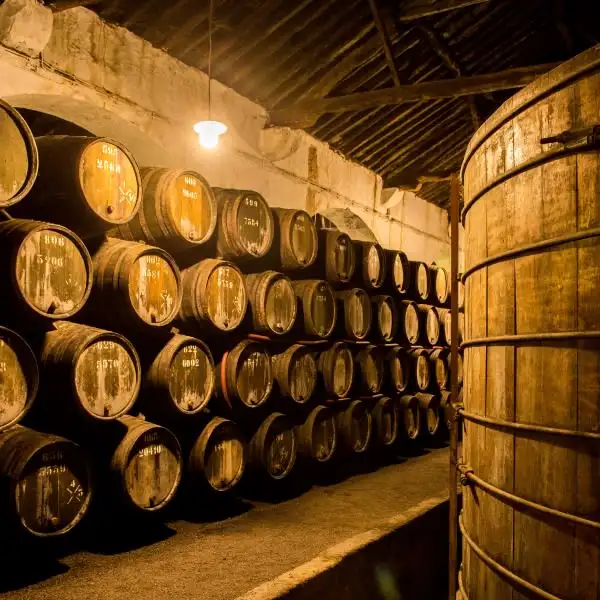
Day 8
Porto
Day 8
Porto


9:00 AM - 1:00 PM
Porto Guided Walking Tour
Enjoy a 4 hour private guided tour of Porto, Capital of Northern Portugal and UNESCO World Heritage. Everything in this wonderful city makes this tour a memorable trip, from the Cathedral to the Port Wine Cellars, where you can enjoy two wine tastings. You will have the opportunity to discover also about Portuguese tradition and culture and important references will be given about the streets and squares of the historic centre.

Day 8
Porto


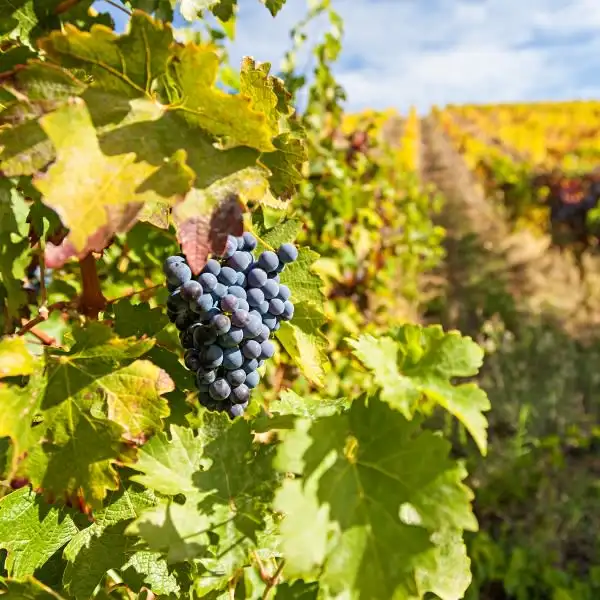
Day 9
Porto
Day 9
Porto

Early Morning to Early Evening
Douro River Excursion
Travel through the stunning depths of the UNESCO-protected Douro River Valley, and discover the wines of royalty. Taking a train from Porto through the Douro River Valley is an unforgettable journey that reveals some of Portugal's most stunning landscapes. As the train winds along the river, passengers are treated to panoramic views of terraced vineyards climbing steep hillsides, traditional quintas (wine estates), and quaint villages that dot the riverbank. This scenic railway route is often considered one of the most beautiful in Europe, offering a peaceful and picturesque way to experience the heart of Portugal's famous wine country. Along the way, the train passes through historic towns and stops at various points, allowing travelers the opportunity to explore the regional culture, cuisine, and, of course, sample the region's renowned wines. Many people say, "It's about the journey, not the destination." Not here. Here the journey and destination are rolled into one on the rails connecting Porto to Pinhão.

Pinhão
Enter this village built between river and mountain, and enjoy a walk and meal among the vines.
Show More

Douro Museum
This Museum proudly communicates the history of the Douro, and of course, port wine.
Show More

Pinhão
Enter this village built between river and mountain, and enjoy a walk and meal among the vines.
Show More

Douro Museum
This Museum proudly communicates the history of the Douro, and of course, port wine.
Show More

Pinhão
Enter this village built between river and mountain, and enjoy a walk and meal among the vines.
Show More

Douro Museum
This Museum proudly communicates the history of the Douro, and of course, port wine.
Show More
prev
next

Day 9
Porto

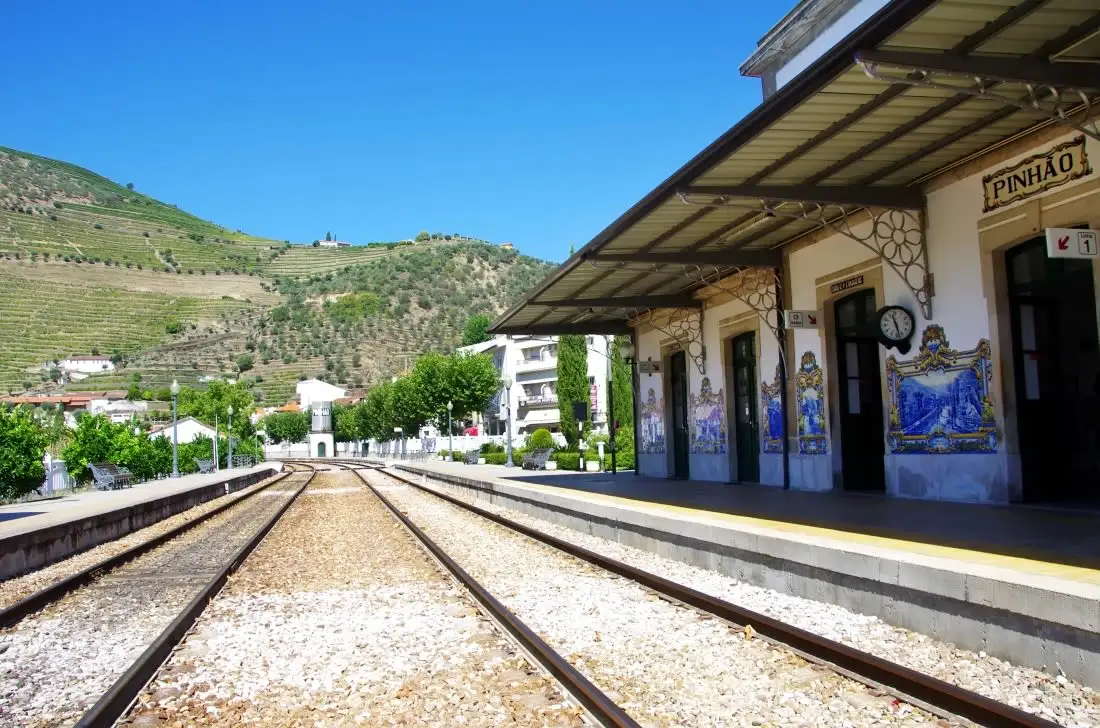
Pinhão
 Highlight of Douro River Excursion
Highlight of Douro River ExcursionEnter this village built between river and mountain, and enjoy a walk and meal among the vines.
Pinhão rests at one of the most picturesque corners of the endlessly picturesque Duoro River Valley. Inhabited since prehistoric times, today the village serves as a waystation for visitors exploring the crenalated landscapes of the Duoro River valley. A delightful place to pause for lunch or even a wine-tasting.
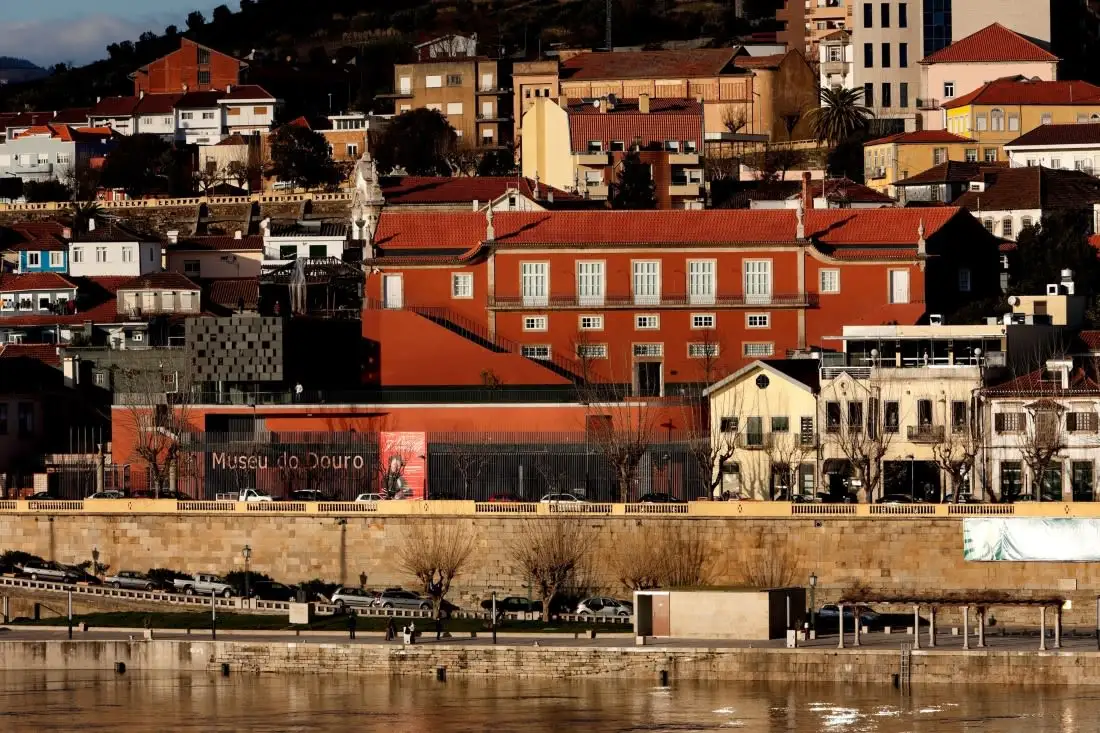
Douro Museum
 Highlight of Douro River Excursion
Highlight of Douro River ExcursionThis Museum proudly communicates the history of the Douro, and of course, port wine.
The Museu do Douro in Régua, Portugal, stands as a tribute to the region’s long history and viticultural heritage. Nestled in the heart of the Douro Valley, a UNESCO World Heritage site, the museum captures the evolution of the wine industry through a fascinating array of exhibits. Visitors can explore everything from the ancient tools used in wine production to multimedia presentations that bring the valley's scenic beauty and historical significance to life. This museum celebrates the past and present of Douro wine while providing panoramic views of the surrounding terraced vineyards, making it a highlight for anyone visiting the region.

Pinhão
 Highlight of Douro River Excursion
Highlight of Douro River ExcursionEnter this village built between river and mountain, and enjoy a walk and meal among the vines.
Pinhão rests at one of the most picturesque corners of the endlessly picturesque Duoro River Valley. Inhabited since prehistoric times, today the village serves as a waystation for visitors exploring the crenalated landscapes of the Duoro River valley. A delightful place to pause for lunch or even a wine-tasting.

Douro Museum
 Highlight of Douro River Excursion
Highlight of Douro River ExcursionThis Museum proudly communicates the history of the Douro, and of course, port wine.
The Museu do Douro in Régua, Portugal, stands as a tribute to the region’s long history and viticultural heritage. Nestled in the heart of the Douro Valley, a UNESCO World Heritage site, the museum captures the evolution of the wine industry through a fascinating array of exhibits. Visitors can explore everything from the ancient tools used in wine production to multimedia presentations that bring the valley's scenic beauty and historical significance to life. This museum celebrates the past and present of Douro wine while providing panoramic views of the surrounding terraced vineyards, making it a highlight for anyone visiting the region.

Pinhão
 Highlight of Douro River Excursion
Highlight of Douro River ExcursionEnter this village built between river and mountain, and enjoy a walk and meal among the vines.
Pinhão rests at one of the most picturesque corners of the endlessly picturesque Duoro River Valley. Inhabited since prehistoric times, today the village serves as a waystation for visitors exploring the crenalated landscapes of the Duoro River valley. A delightful place to pause for lunch or even a wine-tasting.

Douro Museum
 Highlight of Douro River Excursion
Highlight of Douro River ExcursionThis Museum proudly communicates the history of the Douro, and of course, port wine.
The Museu do Douro in Régua, Portugal, stands as a tribute to the region’s long history and viticultural heritage. Nestled in the heart of the Douro Valley, a UNESCO World Heritage site, the museum captures the evolution of the wine industry through a fascinating array of exhibits. Visitors can explore everything from the ancient tools used in wine production to multimedia presentations that bring the valley's scenic beauty and historical significance to life. This museum celebrates the past and present of Douro wine while providing panoramic views of the surrounding terraced vineyards, making it a highlight for anyone visiting the region.
prev
next

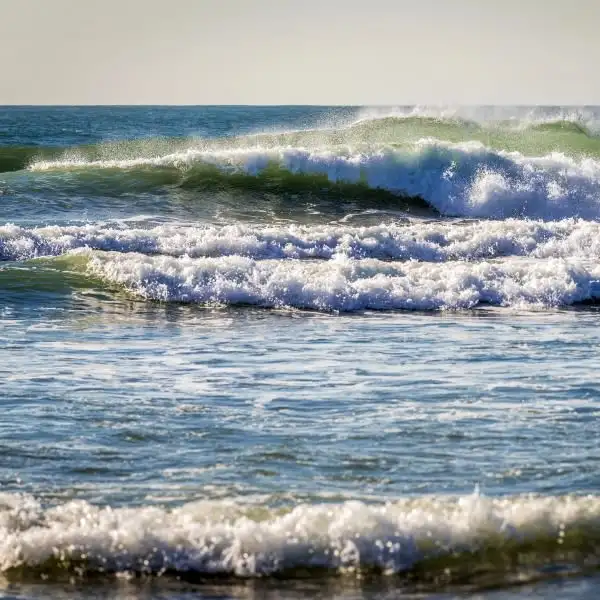
Day 10
Porto
Day 10
Porto


Early Morning to Afternoon
Matosinhos
Matosinhos, a happy town just a 30-minute metro-ride away from Porto, provides the beach-bum, or the traveling family, sand between their toes and the cool water of the Atlantic. But why limit yourself to an ocean breeze? The town's renowned municipal market is housed in an attractive architectural monument; Porto's largest green-space abuts the shoreline and invites passerbys to visit its aquarium, Sea Life. Get this, you can visit country's Center for Architecture and go on a tour of a working fish-tinning factory on the same street (It's better than it sounds)! There's even a fortress called "Cheese Castle" but please, don't let your kids try to bite it, and don't try yourself. So many things to see, so much sand and so little time!

Matosinhos Beach
Discover Matosinhos Beach, just a metro ride and short stroll away from Downtown Porto.
Show More

Parque da Cidade
It might look very old, but it holds some modern amenities to make a visit relaxed and leisurely.
Show More
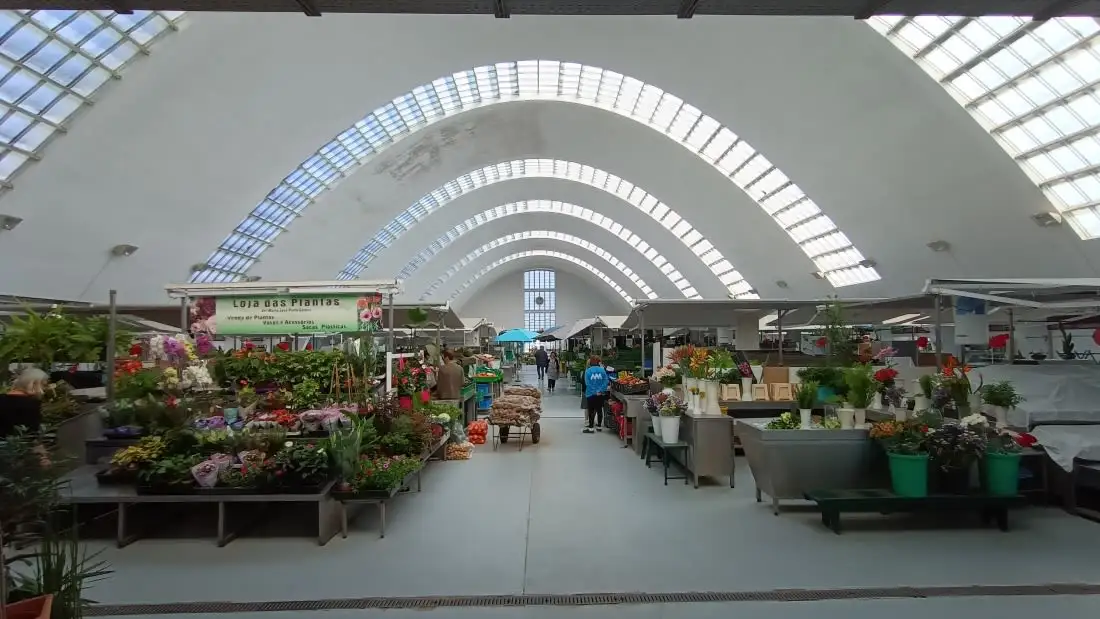
Matosinhos Town Market
Whether cured meats, fresh fish, or vegetables, this market offers it all...
Show More

Pinhais Cannery Museum
Canned Sardines. We know, it doesn't sound exciting. But...
Show More

Matosinhos Beach
Discover Matosinhos Beach, just a metro ride and short stroll away from Downtown Porto.
Show More

Parque da Cidade
It might look very old, but it holds some modern amenities to make a visit relaxed and leisurely.
Show More

Matosinhos Town Market
Whether cured meats, fresh fish, or vegetables, this market offers it all...
Show More

Pinhais Cannery Museum
Canned Sardines. We know, it doesn't sound exciting. But...
Show More
prev
next

Day 10
Porto

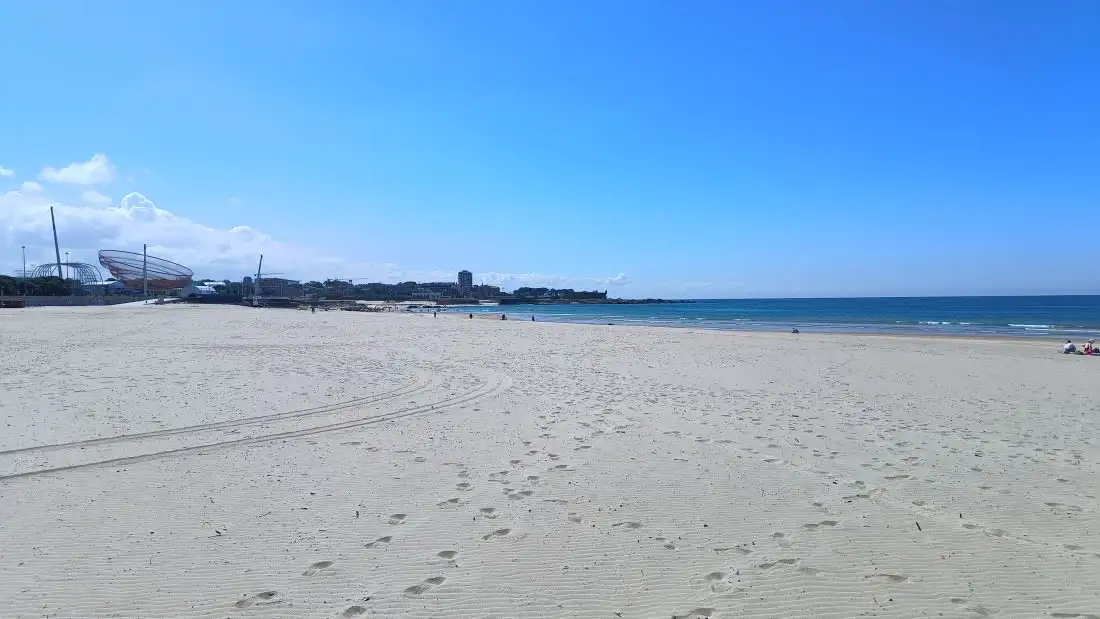
Matosinhos Beach
 Highlight of Matosinhos
Highlight of MatosinhosDiscover Matosinhos Beach, just a metro ride and short stroll away from Downtown Porto.
This expansive beach, a 30-minute metro ride from Downtown Porto, invites locals and tourists to its golden shores Known for its lively atmosphere, Matosinhos Beach has excellent conditions for surfing, thanks to its consistent waves, and hosts numerous surf schools for beginners. Beyond the water, enjoy the bustling promenade lined with seafood restaurants, where you can savor fresh catches of the day. Matosinhos Beach provides a perfect blend of relaxation and activity, at a Portuguese pace.
Parque da Cidade
 Highlight of Matosinhos
Highlight of MatosinhosIt might look very old, but it holds some modern amenities to make a visit relaxed and leisurely.
Porto's largest green-space, the Parque da Cidade makes a visit, well, a walk in the park. Created in 1993. this large public space boasts three ponds, 74 varieties of trees, and a feeling called, "Rural Porto." Using traditional materials and construction techniques, the creators of the park sought to give people a sensation of another era. Cafes appear at either end of this 1km-long park, and bathrooms and water spigots make a visit comfortable and unhurried. The Pavilion of Water located in the northeast corner of the park allows children and adults to learn about H2O.

Matosinhos Town Market
 Highlight of Matosinhos
Highlight of MatosinhosWhether cured meats, fresh fish, or vegetables, this market offers it all...
Matosinhos Market hums a northern Portuguese tune with its local commerce Renowned for its fresh seafood, caught daily by local fishermen and showcased in an array of colorful stalls this exemplar of mid-century architecture can be a pleasure for all five senses. In addition to seafood, you'll find a variety of fresh produce, regional delicacies, and artisanal products, making it a perfect spot to sample the authentic flavors of the region. (Hours: Sunday, closed; Monday, 7-14:00; Tuesday- Friday 6:30-18:00; Saturday, 6:30-16:00)

Pinhais Cannery Museum
 Highlight of Matosinhos
Highlight of MatosinhosCanned Sardines. We know, it doesn't sound exciting. But...
Pinhais Cannery is passionate about what they do at their museum / factory. Commerical fishing is an important part of Portugal's economy, and Pinhais still produces tins by hand, providing jobs for locals and delicious fish to the rest of the world. The 90-minute tour will take you past the dilligent workers and through the history of Portugal's fishing industry; you will even have the chance to wrap your own tin in the distinct, brightly-colored paper of the Pinhais brand.

Matosinhos Beach
 Highlight of Matosinhos
Highlight of MatosinhosDiscover Matosinhos Beach, just a metro ride and short stroll away from Downtown Porto.
This expansive beach, a 30-minute metro ride from Downtown Porto, invites locals and tourists to its golden shores Known for its lively atmosphere, Matosinhos Beach has excellent conditions for surfing, thanks to its consistent waves, and hosts numerous surf schools for beginners. Beyond the water, enjoy the bustling promenade lined with seafood restaurants, where you can savor fresh catches of the day. Matosinhos Beach provides a perfect blend of relaxation and activity, at a Portuguese pace.
Parque da Cidade
 Highlight of Matosinhos
Highlight of MatosinhosIt might look very old, but it holds some modern amenities to make a visit relaxed and leisurely.
Porto's largest green-space, the Parque da Cidade makes a visit, well, a walk in the park. Created in 1993. this large public space boasts three ponds, 74 varieties of trees, and a feeling called, "Rural Porto." Using traditional materials and construction techniques, the creators of the park sought to give people a sensation of another era. Cafes appear at either end of this 1km-long park, and bathrooms and water spigots make a visit comfortable and unhurried. The Pavilion of Water located in the northeast corner of the park allows children and adults to learn about H2O.

Matosinhos Town Market
 Highlight of Matosinhos
Highlight of MatosinhosWhether cured meats, fresh fish, or vegetables, this market offers it all...
Matosinhos Market hums a northern Portuguese tune with its local commerce Renowned for its fresh seafood, caught daily by local fishermen and showcased in an array of colorful stalls this exemplar of mid-century architecture can be a pleasure for all five senses. In addition to seafood, you'll find a variety of fresh produce, regional delicacies, and artisanal products, making it a perfect spot to sample the authentic flavors of the region. (Hours: Sunday, closed; Monday, 7-14:00; Tuesday- Friday 6:30-18:00; Saturday, 6:30-16:00)

Pinhais Cannery Museum
 Highlight of Matosinhos
Highlight of MatosinhosCanned Sardines. We know, it doesn't sound exciting. But...
Pinhais Cannery is passionate about what they do at their museum / factory. Commerical fishing is an important part of Portugal's economy, and Pinhais still produces tins by hand, providing jobs for locals and delicious fish to the rest of the world. The 90-minute tour will take you past the dilligent workers and through the history of Portugal's fishing industry; you will even have the chance to wrap your own tin in the distinct, brightly-colored paper of the Pinhais brand.
prev
next


Day 11
Porto
Day 11
Porto

Early Morning to Early Evening
Guimarães
What do get when you combine a small-city feel with world-changing history? Guimarães! Called the birthplace of the Nation of Portugal, the kingdom founded here went on to explore the world and affect world politics from China and India to Africa and South America. A pleasant city with important castles, beautiful churches, an old fortress wall that you can walk upon if you know where to look, and a square where tourists can admire old houses, and the citizen living in them can hang their laundry and admire the tourists. This city is an excellent example of a balance between tourism and a living town center.
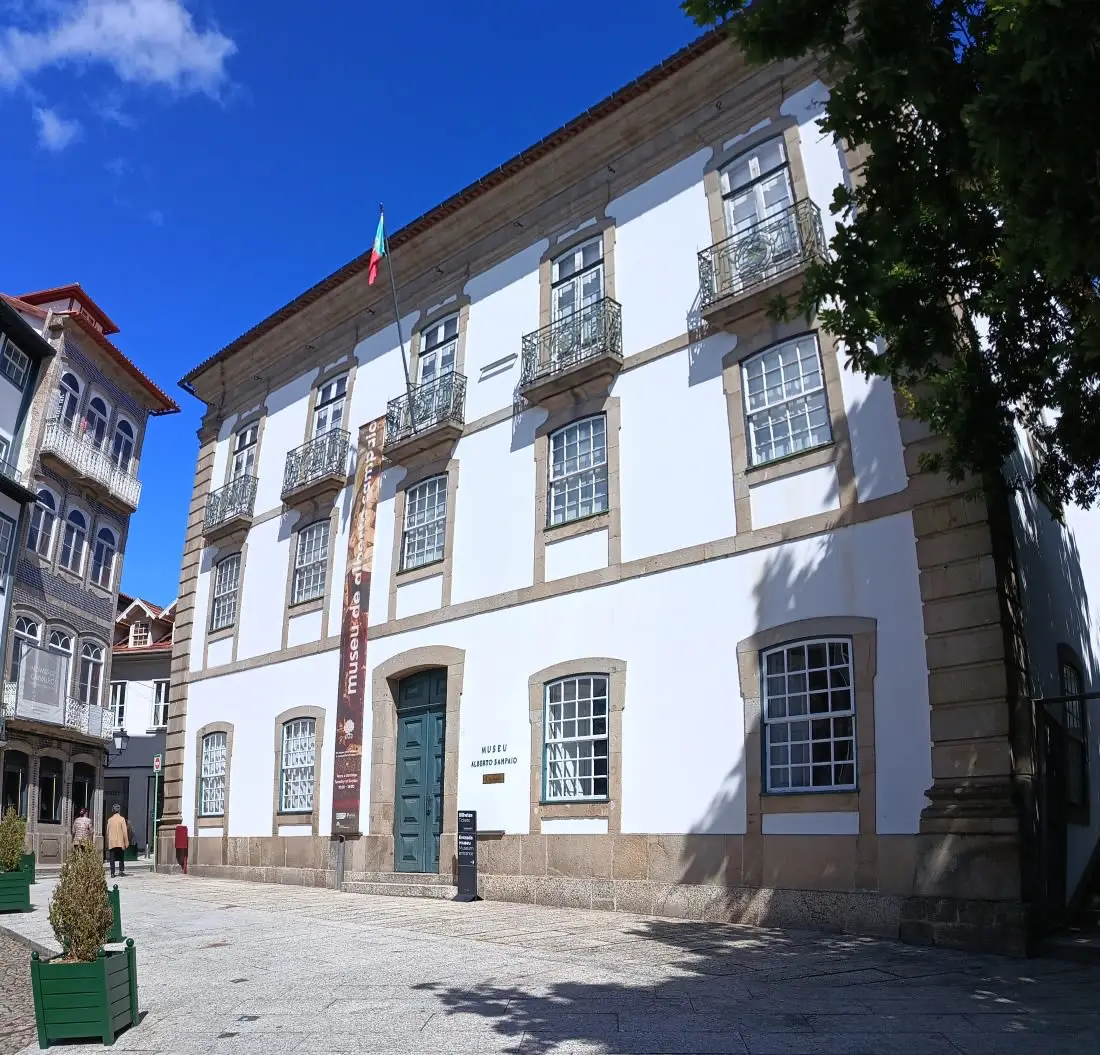
Alberto Sampaio Museum
Visit this quiet, little museum that speaks volumes about the start of Portugal...
Show More

Medieval City Wall
A nice walk on a 13th century wall...
Show More

Alberto Sampaio Museum
Visit this quiet, little museum that speaks volumes about the start of Portugal...
Show More

Medieval City Wall
A nice walk on a 13th century wall...
Show More

Alberto Sampaio Museum
Visit this quiet, little museum that speaks volumes about the start of Portugal...
Show More

Medieval City Wall
A nice walk on a 13th century wall...
Show More
prev
next

Day 11
Porto


Alberto Sampaio Museum
 Highlight of Guimarães
Highlight of GuimarãesVisit this quiet, little museum that speaks volumes about the start of Portugal...
The Museu de Alberto Sampaio brings the visitor back to the very start of the Portuguese kingdom. Historians will investigate the early artifacts of the kingdom like the 14th-century militrary dress Dom João I. Art enthusiasts will marvel at the small, but important collection of Medieval, Late Renaissance and Baroque sculpture. Housed in a former convent, this museum keeps the calm and tranquil atmosphere of bygone days.

Medieval City Wall
 Highlight of Guimarães
Highlight of GuimarãesA nice walk on a 13th century wall...
It allows for great views of the city, and the countryside. You can imagine yourself a medieval guard - or certainly let your children do so - on this educational and whimsical walkway above the city.

Alberto Sampaio Museum
 Highlight of Guimarães
Highlight of GuimarãesVisit this quiet, little museum that speaks volumes about the start of Portugal...
The Museu de Alberto Sampaio brings the visitor back to the very start of the Portuguese kingdom. Historians will investigate the early artifacts of the kingdom like the 14th-century militrary dress Dom João I. Art enthusiasts will marvel at the small, but important collection of Medieval, Late Renaissance and Baroque sculpture. Housed in a former convent, this museum keeps the calm and tranquil atmosphere of bygone days.

Medieval City Wall
 Highlight of Guimarães
Highlight of GuimarãesA nice walk on a 13th century wall...
It allows for great views of the city, and the countryside. You can imagine yourself a medieval guard - or certainly let your children do so - on this educational and whimsical walkway above the city.

Alberto Sampaio Museum
 Highlight of Guimarães
Highlight of GuimarãesVisit this quiet, little museum that speaks volumes about the start of Portugal...
The Museu de Alberto Sampaio brings the visitor back to the very start of the Portuguese kingdom. Historians will investigate the early artifacts of the kingdom like the 14th-century militrary dress Dom João I. Art enthusiasts will marvel at the small, but important collection of Medieval, Late Renaissance and Baroque sculpture. Housed in a former convent, this museum keeps the calm and tranquil atmosphere of bygone days.

Medieval City Wall
 Highlight of Guimarães
Highlight of GuimarãesA nice walk on a 13th century wall...
It allows for great views of the city, and the countryside. You can imagine yourself a medieval guard - or certainly let your children do so - on this educational and whimsical walkway above the city.
prev
next


Day 12
Porto
Day 12
Porto

Morning to Early Evening
Braga
Why is Braga referred to as the "Rome of Portugal"? Because Rome conquered the area under Caesar Augustus? Because it has more Catholic churches than you can shake a stick at? Let's call it both; but really, it's the latter. The Sanctuary of Bom Jesus do Monte is a UNESCO attraction here for its contributions to Old- and New-World, baroque architecture, and the Cathedral of Braga is an impressive fortress of a church, but the city's small delights might be what charm more. The older Rome of Augustus, however, still reveals itself, and in in some surprising places.

Restaurant Frigideiras do Cantinho
This restaurant has been serving these meat pies since 1796... but that's nothing compared to the shop's floor
Show More

Museum of archeology D. Diogo de Sousa
A museum dedicated to uncovering Braga's history
Show More

The Sanctuary of Bom Jesus do Monte
This structure went on to heavily influence architecture in the New World...
Show More

Braga cathedral
It's made of granite: This 11th-century church isn't going anywhere soon.
Show More

Restaurant Frigideiras do Cantinho
This restaurant has been serving these meat pies since 1796... but that's nothing compared to the shop's floor
Show More

Museum of archeology D. Diogo de Sousa
A museum dedicated to uncovering Braga's history
Show More

The Sanctuary of Bom Jesus do Monte
This structure went on to heavily influence architecture in the New World...
Show More

Braga cathedral
It's made of granite: This 11th-century church isn't going anywhere soon.
Show More
prev
next

Day 12
Porto


Restaurant Frigideiras do Cantinho
 Highlight of Braga
Highlight of BragaThis restaurant has been serving these meat pies since 1796... but that's nothing compared to the shop's floor
Frigideiras (Free-zhe-daie-ras) are flaky lard crusts filled with ground veal. The recipe hasn't changed much since the resturant, Frigideiras do Cantinho, opened in 1796 (They admit to now using a little bit of margarine in the pastry now). Come in, try a simple, everyday classic that is only made in this restaurant, but has been mentioned in the works of various Portuguese authors. Then, look at, or through, the floor. It's glass, because underneath are Roman ruins from the first 300 years A.D.. The decor of the restaurant is quaint, the basement is, ahem... quaintient.

Museum of archeology D. Diogo de Sousa
 Highlight of Braga
Highlight of BragaA museum dedicated to uncovering Braga's history
Delve into the rich archaeological heritage of Braga at the D. Diogo de Sousa Museum, named after a notable bishop who was instrumental in the city's development during 16th century. This modern museum showcases an extensive collection of artifacts spanning from the Paleolithic era to the Middle Ages, and specializes in Braga's Roman era. Marvel at the well-preserved mosaics, ancient coins, and everyday objects that paint a vivid picture of life in Braga over the centuries. The museum's engaging exhibits and educational programs make it an essential stop for history buffs and curious travelers eager to uncover the layers of the city's past.

The Sanctuary of Bom Jesus do Monte
 Highlight of Braga
Highlight of BragaThis structure went on to heavily influence architecture in the New World...
Bom Jesus do Monte, near Braga, Portugal, is a revered pilgrimage site known for its striking Baroque architecture and grand staircase, the Escadaria do Bom Jesus. The ascent, adorned with statues and fountains, symbolizes spiritual ascent and offers panoramic views of Braga. At the summit, the 19th-century Bom Jesus Church provides a serene setting for reflection, while the surrounding gardens offer a peaceful retreat. If you didn't pray on the stairs, you will on the oldest funicular in Portugal. This clever machine has been helping pilgrims avoid the stairway to heaven since 1882.

Braga cathedral
 Highlight of Braga
Highlight of BragaIt's made of granite: This 11th-century church isn't going anywhere soon.
The oldest extant cathedral in Portugal reflects the country's religious and architectural history. Founded 1000 years ago, today it reflects the sensibilities of the Medieval, Renaissance, and Baroque eras through which it has existed. Inside, visitors can admire intricate altarpieces, historical tombs, and the ornate chapel of São Geraldo. An attached museum will give you the context and importance of this building

Restaurant Frigideiras do Cantinho
 Highlight of Braga
Highlight of BragaThis restaurant has been serving these meat pies since 1796... but that's nothing compared to the shop's floor
Frigideiras (Free-zhe-daie-ras) are flaky lard crusts filled with ground veal. The recipe hasn't changed much since the resturant, Frigideiras do Cantinho, opened in 1796 (They admit to now using a little bit of margarine in the pastry now). Come in, try a simple, everyday classic that is only made in this restaurant, but has been mentioned in the works of various Portuguese authors. Then, look at, or through, the floor. It's glass, because underneath are Roman ruins from the first 300 years A.D.. The decor of the restaurant is quaint, the basement is, ahem... quaintient.

Museum of archeology D. Diogo de Sousa
 Highlight of Braga
Highlight of BragaA museum dedicated to uncovering Braga's history
Delve into the rich archaeological heritage of Braga at the D. Diogo de Sousa Museum, named after a notable bishop who was instrumental in the city's development during 16th century. This modern museum showcases an extensive collection of artifacts spanning from the Paleolithic era to the Middle Ages, and specializes in Braga's Roman era. Marvel at the well-preserved mosaics, ancient coins, and everyday objects that paint a vivid picture of life in Braga over the centuries. The museum's engaging exhibits and educational programs make it an essential stop for history buffs and curious travelers eager to uncover the layers of the city's past.

The Sanctuary of Bom Jesus do Monte
 Highlight of Braga
Highlight of BragaThis structure went on to heavily influence architecture in the New World...
Bom Jesus do Monte, near Braga, Portugal, is a revered pilgrimage site known for its striking Baroque architecture and grand staircase, the Escadaria do Bom Jesus. The ascent, adorned with statues and fountains, symbolizes spiritual ascent and offers panoramic views of Braga. At the summit, the 19th-century Bom Jesus Church provides a serene setting for reflection, while the surrounding gardens offer a peaceful retreat. If you didn't pray on the stairs, you will on the oldest funicular in Portugal. This clever machine has been helping pilgrims avoid the stairway to heaven since 1882.

Braga cathedral
 Highlight of Braga
Highlight of BragaIt's made of granite: This 11th-century church isn't going anywhere soon.
The oldest extant cathedral in Portugal reflects the country's religious and architectural history. Founded 1000 years ago, today it reflects the sensibilities of the Medieval, Renaissance, and Baroque eras through which it has existed. Inside, visitors can admire intricate altarpieces, historical tombs, and the ornate chapel of São Geraldo. An attached museum will give you the context and importance of this building
prev
next


Day 13
Porto
Day 13
Porto

9:00 AM - 2:15 PM
Aveiro & Costa Nova Guided
Discover the singular "Portuguese Venice”, Aveiro on this half-day private tour. The enchanting city is known for its dazzling canals and delicious local sweets, the Ovos Moles. Embark on a Moliceiro, the traditional boat that navigates the Ria de Aveiro and be amazed by the Cost Nova's spirit and its brightly colored houses.

Day 13
Porto



Day 14
Depart Porto
Day 14
Depart Porto

To Be Determined
Airport Drop-off
A Taxi ride or Uber to the airport is generally the quickest way to arrive at Porto's airport, with little hassle about luggage. The metro is certainly the least expensive route to the airport, but can take considerably longer. Read on to choose which is right for you.

Day 14
Depart Porto


What's Included In Portugal’s Grand Tour Trip

Pre-Paid Tours and Activities:
- Introduction to Lisbon Tour: Bairro Alto, Chiado, and Baixa
- Highlights of Porto Private Guided Walking Tour
- Private Aveiro & Costa Nova Tour Half Day
- City Card for Lisbon, including discounts to many popular attractions

Pre-Paid Transportation:
- 2nd Class Train Tickets from Lisbon-Porto
- Public Transport Tickets for Lisbon

Accommodation:
- 5 nights at a hotel of your choice in Lisbon
- 8 nights at a hotel of your choice in Porto

Go Real Travel Mobile App:
- Itinerary Plan & Reservations Info
- Points of Interest
- Detailed Travel Information
- Maps & Directions
Other Trips You May Like
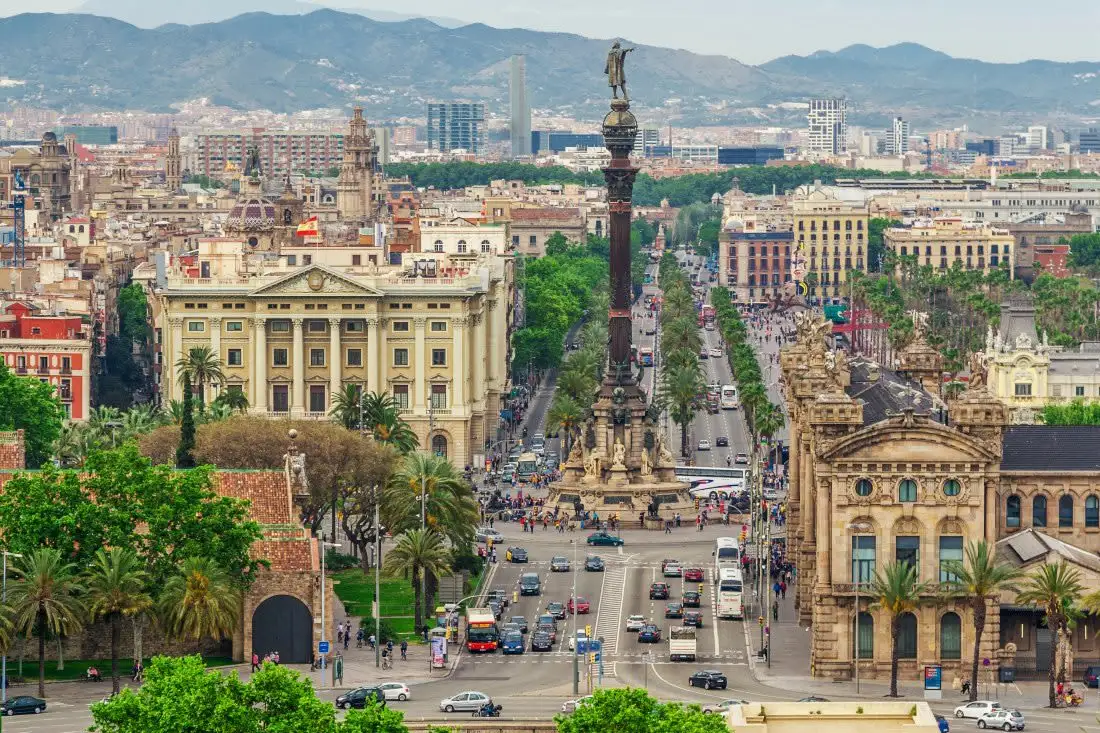
7 Days
From$1998USD

7 Days
From$1700USD

10 Days
From$2599USD

15 Days
From$5274USD
Southern European Treasures: A 15-Day Cultural Odyssey in Portugal, Spain & Italy

Portugal, Spain, Italy

7 Days
From$1149USD

10 Days
From$2799USD
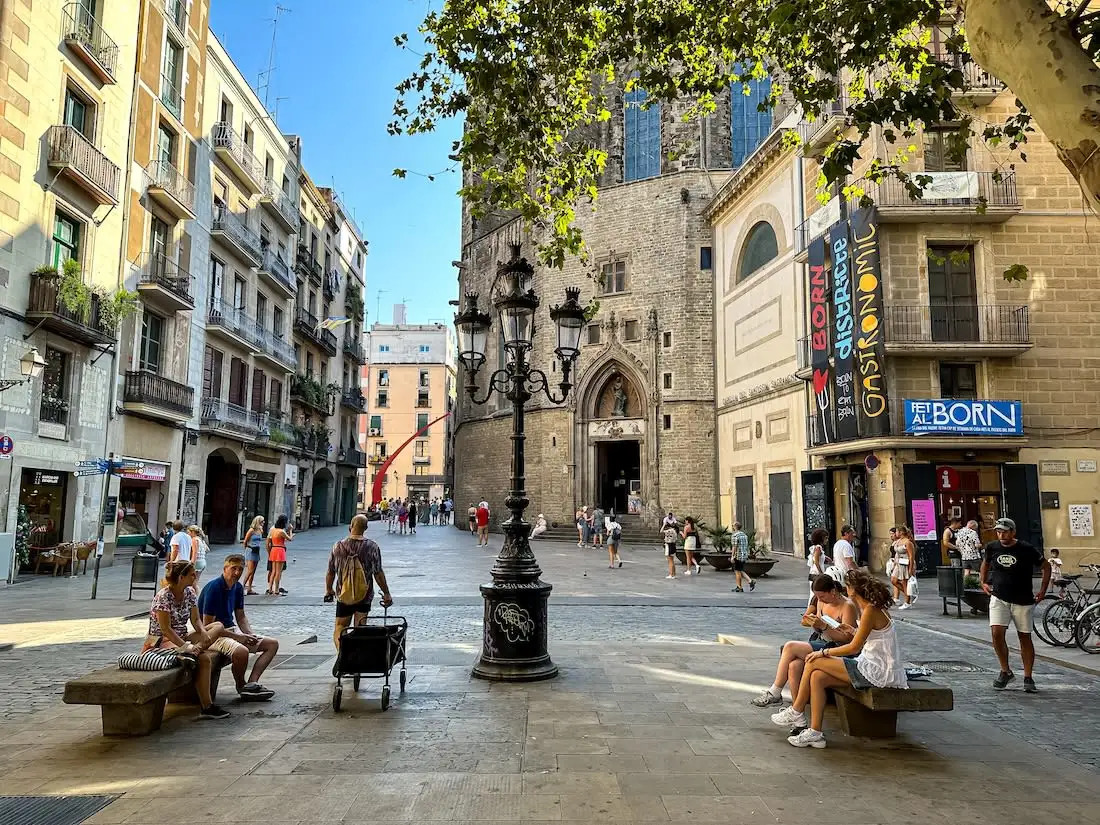
14 Days
From$3679USD
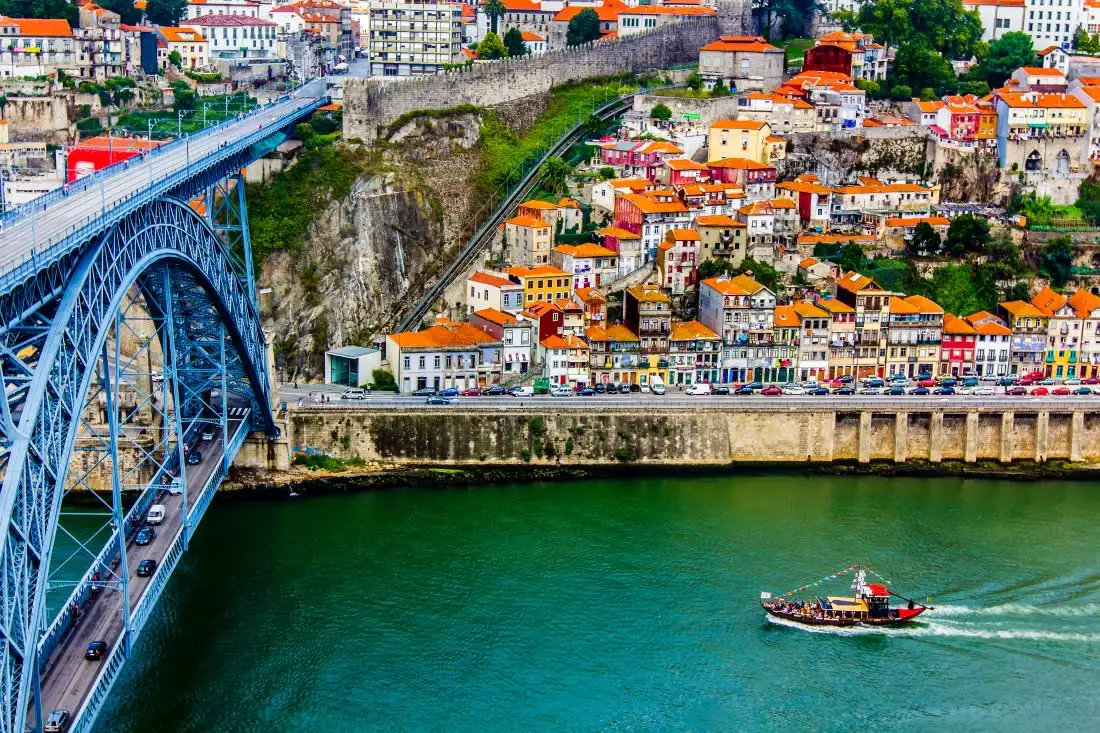
15 Days
From$3832USD
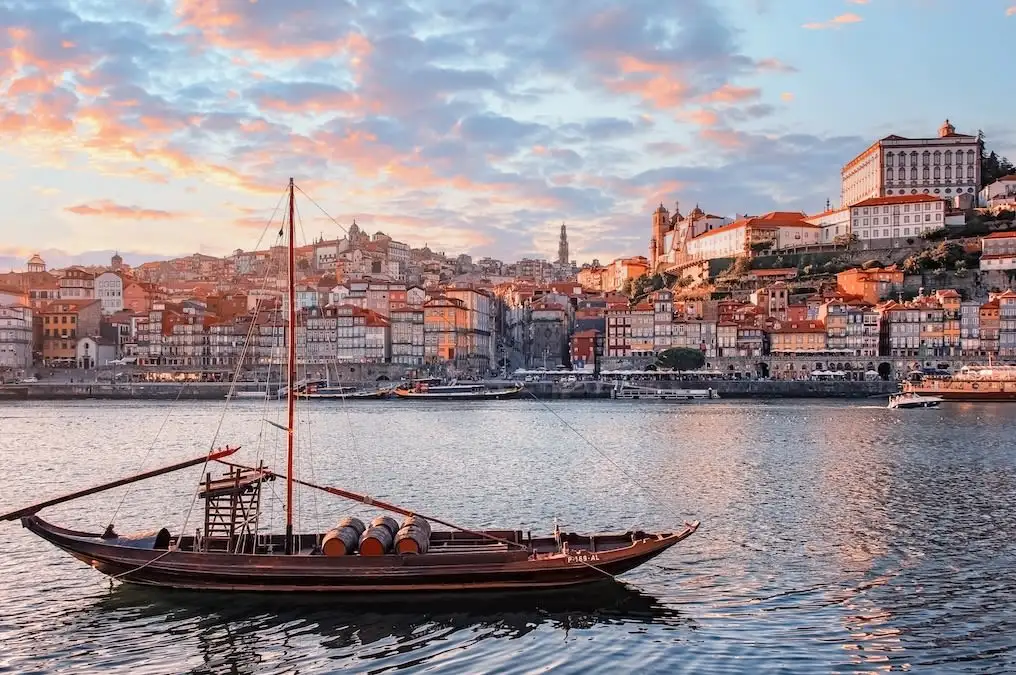
21 Days
From$4999USD

7 Days
From$1998USD

7 Days
From$1700USD

10 Days
From$2599USD

15 Days
From$5274USD
Southern European Treasures: A 15-Day Cultural Odyssey in Portugal, Spain & Italy

Portugal, Spain, Italy

7 Days
From$1149USD

10 Days
From$2799USD

14 Days
From$3679USD

15 Days
From$3832USD

21 Days
From$4999USD
prev
next
Featured Blogs
prev
next
Our Customers Say It Best
Marianne Strydom, Paarl, South Africa
I just wanted to thank you for organizing an amazing trip for me – I packed in so much in such a short period of time and everything was just perfect. The way you do things makes it possible to really get to know the destination, which for me as a travel agent could not have been better. 

Otto Chuy, Los Angeles, California
I am still surprised how everything worked as planned, without a hitch. All instructions in your itinerary were precise and correct. Your suggestions and comments in each of the locations we went to were very helpful. All your guides, without exception, were wonderful and exactly on time. 

Malini Dutta, Boston, Massachusetts
We can't thank you enough for the detailed plans, maps, and suggestions. It really felt that someone was holding our hands and showing us around. We had all the excitement of discovering foreign lands, with none of the problems that can happen while negotiating unfamiliar places. In fact, all the cities felt like home within a few hours of arriving and exploring. 

Bev and Mark Frankel, Williamsburg, Virginia
We could not be more pleased with Go Real Travel! You took the guess work out of things like public transport but still managed to allow us the freedom to tour as we wanted. Our guides were exceptional and every time I saw a Viking Cruise tour of 25 people, I realized the quality experience we were getting with Go Real. 

Marianne Strydom, Paarl, South Africa
I just wanted to thank you for organizing an amazing trip for me – I packed in so much in such a short period of time and everything was just perfect. The way you do things makes it possible to really get to know the destination, which for me as a travel agent could not have been better. 

Otto Chuy, Los Angeles, California
I am still surprised how everything worked as planned, without a hitch. All instructions in your itinerary were precise and correct. Your suggestions and comments in each of the locations we went to were very helpful. All your guides, without exception, were wonderful and exactly on time. 

Malini Dutta, Boston, Massachusetts
We can't thank you enough for the detailed plans, maps, and suggestions. It really felt that someone was holding our hands and showing us around. We had all the excitement of discovering foreign lands, with none of the problems that can happen while negotiating unfamiliar places. In fact, all the cities felt like home within a few hours of arriving and exploring. 

Bev and Mark Frankel, Williamsburg, Virginia
We could not be more pleased with Go Real Travel! You took the guess work out of things like public transport but still managed to allow us the freedom to tour as we wanted. Our guides were exceptional and every time I saw a Viking Cruise tour of 25 people, I realized the quality experience we were getting with Go Real. 



Explore cities in more detail
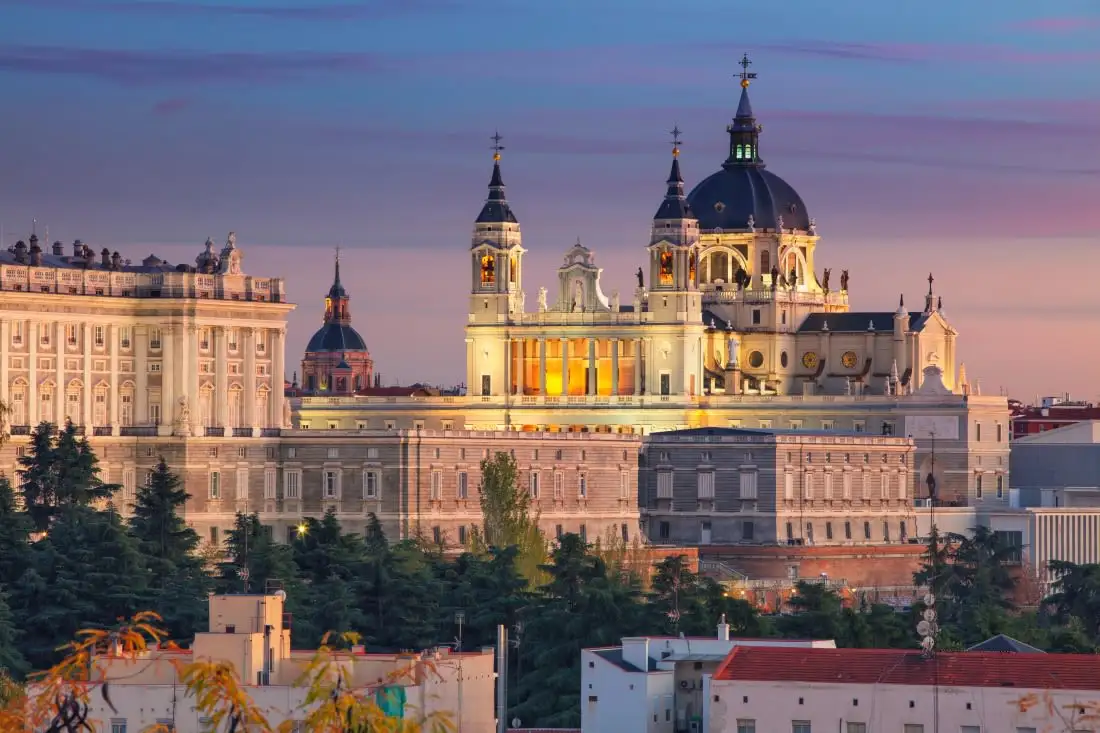
Madrid
What are the best Madrid recommendations for Madrid travel? Take two parts culture, two part history, douse it with art, sprinkle it all with lots of Spanish zest, and live vigorously: That's the recipe for Madrid, Spain's capital. Let Go Real be your guide to Madrid, the city alive with the rhythms of passionate flamenco on its cosmopolitan streets, inviting travelers into its warm embrace. Here, art enthusiasts can lose themselves in the hallowed halls of the Prado Museum, home to masterpieces by Velázquez, Goya, and El Greco, while the Reina Sofia and Thyssen-Bornemisza museums complete Madrid's famed Art Triangle, offering a journey through centuries of art history. The city's culinary scene is equally compelling, with tapas bars and bustling markets like Mercado San Miguel offering a taste of Spain's rich gastronomic heritage through an array of tapas, wines, and cheeses. Madrid's architectural splendor is evident in its royal palaces, ornate plazas, and expansive parks, such as the Retiro, a green oasis in the heart of the city where locals and tourists alike find respite by its serene lake. As night falls, Madrid's streets come alive with an infectious energy, from the historic tapas bars in the Latina district to the chic dancehalls in Malasaña and Chueca, reflecting the city's open-hearted spirit and its inhabitants' joie de vivre. With Go Real's Madrid sightseeing guide and using our Madrid tips, you will find the best place to bask in the sun at a lively terrace café, explore the treasures of the Hapsburg Madrid, or discover your own precious finds at Rastro's flea market. With our best Madrid travelguide, the city offers an endless array of experiences that beckon the curious traveler to taste its many charms.

Learn About Madrid
Build Madrid Trip
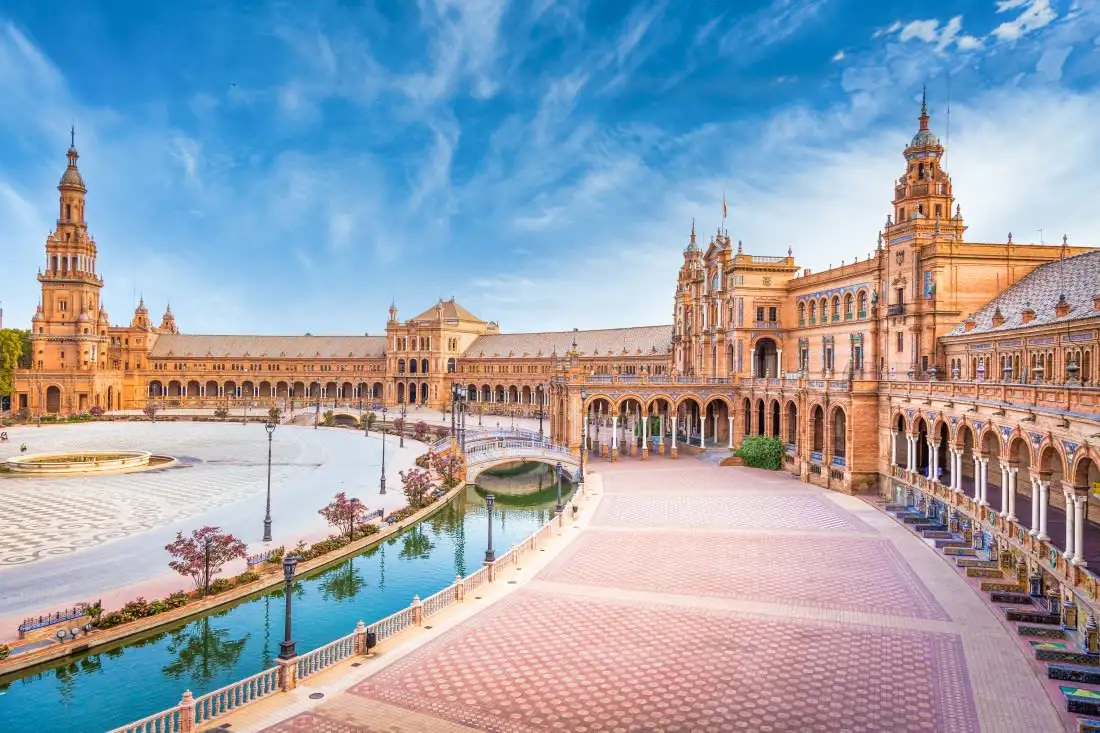
Seville
Seville, the capital of Spain's Andalusia region, is a city rich in history and culture. Architectural marvels like Plaza de España, Seville Cathedral, and the Alcazar reflect its storied past, while its vibrant cuisine and flamenco music showcase its lively present. Key landmarks include the Giralda, a minaret turned bell tower, and the bustling old town, filled with narrow streets, traditional tapas bars, and lively plazas. Whether exploring historical sites or savoring local flavors, Seville captivates with its spirited atmosphere and colorful heritage, making it a true center of Spanish culture and tradition.

Learn About Seville
Build Seville Trip

Malaga
Málaga, a gem on Spain’s sun-drenched Costa del Sol, is a city that effortlessly blends the charm of its Moorish past with the vibrancy of modern Mediterranean life. Nestled between the azure waves of the Alboran Sea and the rolling hills of Andalusia, Málaga invites you to explore its rich history, from the ancient Alcazaba fortress to the birthplace of Picasso. Wander through bustling plazas lined with palm trees, sip sangria at a beachside chiringuito, and feast on fresh seafood at the lively Atarazanas Market. This city is a sensory delight where sun-kissed days melt into nights buzzing with flamenco rhythms and the laughter of locals enjoying late-night tapas. Whether you're seeking cultural treasures, coastal relaxation, or a taste of Andalusian zest, Málaga promises a vibrant, warm, and unforgettable escape.

Learn About Malaga
Build Malaga Trip
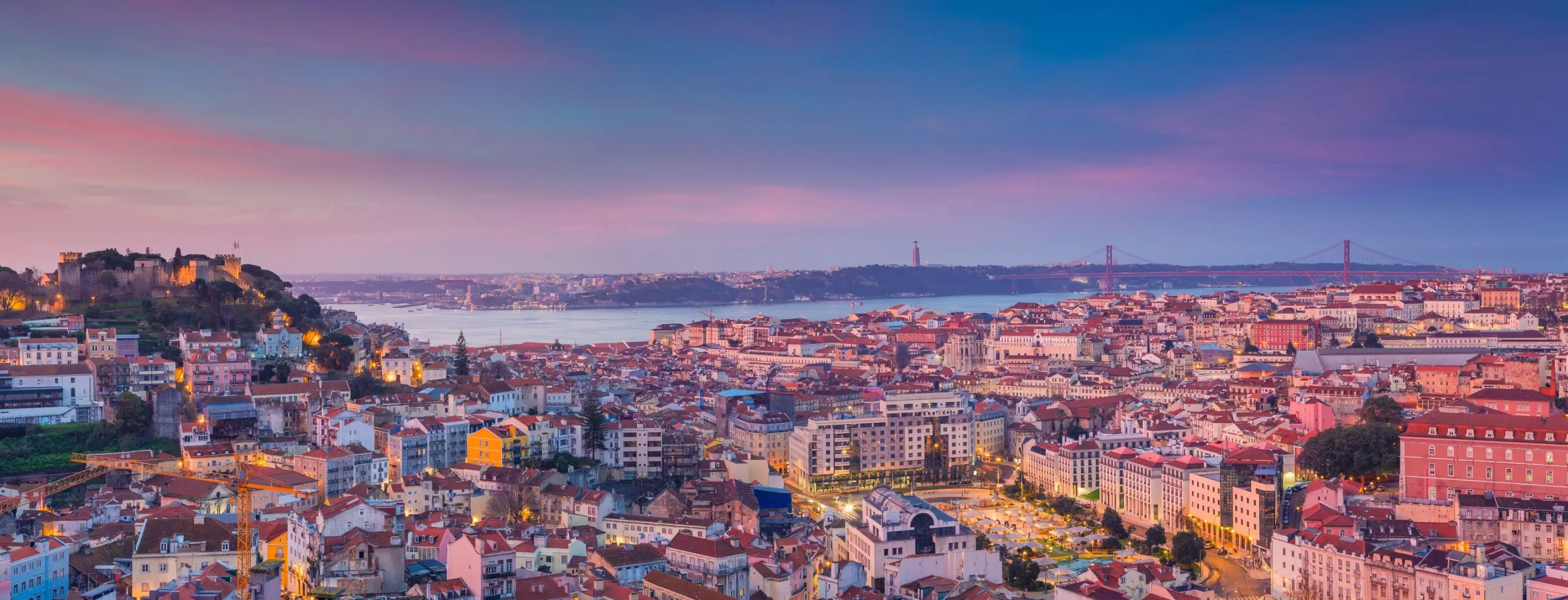
Lisbon
The charm of Lisbon is simply irresistible. One of Europe's "forgotten" capitals, Lisbon effortlessly blends old-world history with a modern, cosmopolitan vibe. A must-visit destination for any traveler, Lisbon offers iconic sights like the historic Belém Tower and the stunning Jerónimos Monastery, both UNESCO World Heritage Sites. There is so much to experience in this city, and it helps to explore it through your own personal interests. Foodie? You’re in luck. Lisbon's cuisine will capture your heart with fresh seafood at Mercado da Ribeira and the famed pastéis de nata from Pastéis de Belém. Love history? Discover the city’s past through the ancient streets of Alfama, where every corner unveils a piece of Lisbon’s storied heritage, from Roman influences to the Age of Exploration. Art and architecture lovers will be enchanted by the Azulejos (traditional tiles) that decorate the city, or can dive into contemporary works at the MAAT museum. And as you climb the hills of Bairro Alto or gaze across the city from the iconic viewpoint at Miradouro da Senhora do Monte, you'll realize that Lisbon’s beauty never fades. Whether riding a vintage tram through the narrow streets or watching the sunset over the River Tagus, it’s easy to fall in love with this sun-drenched gem of Portugal.

Learn About Lisbon
Build Lisbon Trip
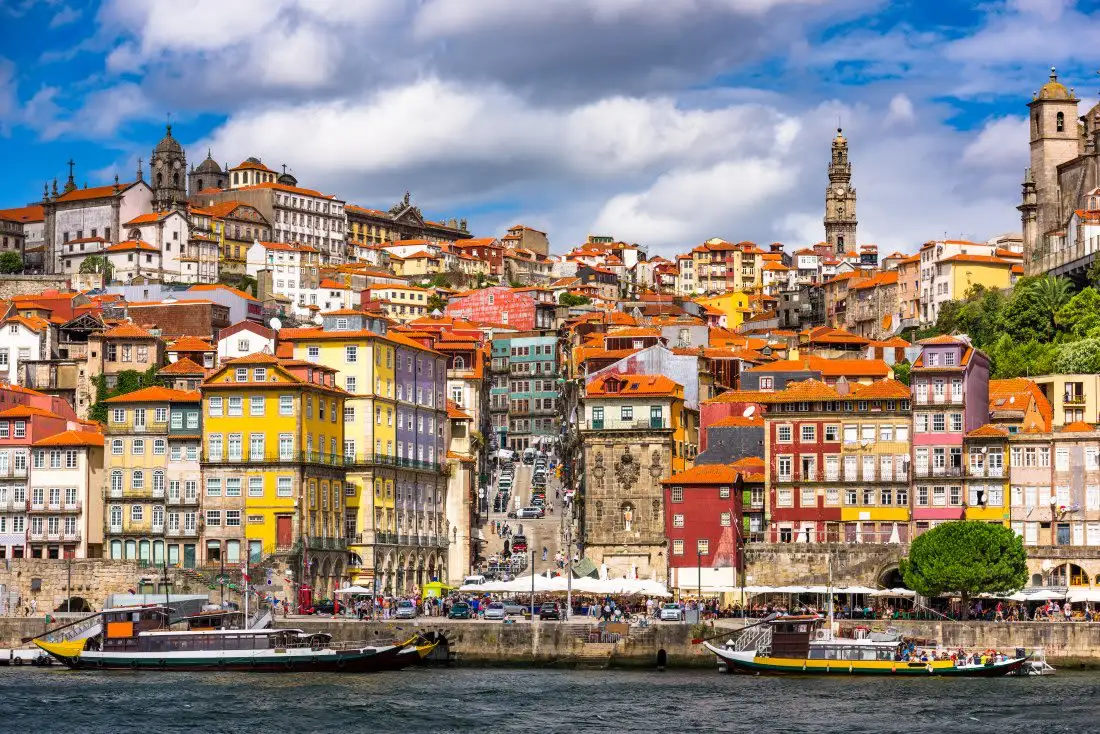
Porto
With cliffs like these, who needs skyscrapers? Porto drapes its steep hillsides with colorful homes, ancient palaces, convents, and factories, each telling a story. These precipitous structures loom above the bustling Ribeira District, or sparkle like jewels when viewed from the venerable Clérigos Tower, perched on a central hilltop. Porto can be sunny or rainy, just like its architecture; the sober, local granite provides a solid foundation from which bright azulejos tiles radiate warmth. The locals’ homes that still grace even the most touristed areas are as thrilling to see as the iconic Sé Cathedral. Explore Porto's winding streets through the Centro Histórico, marvel at the nearly magical Lello bookstore, sip and snack your way through the vibrant Bolhão market, or delve into the rich history of port wine. With our Porto travel guide and tailored Porto travel itineraries, you’ll uncover delightful contrasts of old and new. No matter where you wander, Porto promises to leave you with sweet memories of its breathtaking heights and vibrant spirit.

Learn About Porto
Build Porto Trip
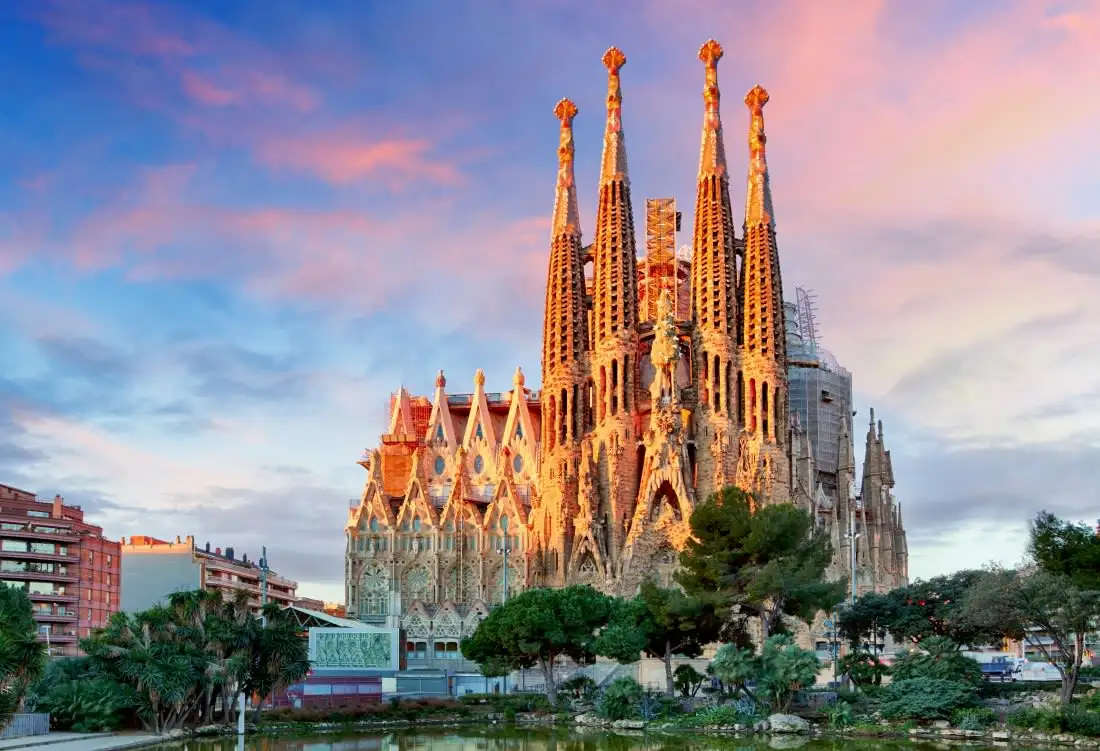
Barcelona
Barcelona, the cosmopolitan capital of Catalonia, is a city that dances to a rhythm of its own. Known for its architectural wonders and vibrant street life, this city is a tapestry of rich history and contemporary culture. Wander through its bustling streets and you'll feel the pulse of heritage and innovation beating as one. From the awe-inspiring Sagrada Familia to the colorful mosaics of Park Guell, Barcelona offers endless avenues to explore and discover. As the sun sets, the city transforms into a lively spectacle of lights and shadows, inviting you to indulge in its culinary delights and spirited nightlife. Whether you’re soaking up the Mediterranean sun on its beaches or exploring its Gothic quarters, Barcelona promises an unforgettable journey that will captivate your heart and stir your soul.

Learn About Barcelona
Build Barcelona Trip

Madrid
What are the best Madrid recommendations for Madrid travel? Take two parts culture, two part history, douse it with art, sprinkle it all with lots of Spanish zest, and live vigorously: That's the recipe for Madrid, Spain's capital. Let Go Real be your guide to Madrid, the city alive with the rhythms of passionate flamenco on its cosmopolitan streets, inviting travelers into its warm embrace. Here, art enthusiasts can lose themselves in the hallowed halls of the Prado Museum, home to masterpieces by Velázquez, Goya, and El Greco, while the Reina Sofia and Thyssen-Bornemisza museums complete Madrid's famed Art Triangle, offering a journey through centuries of art history. The city's culinary scene is equally compelling, with tapas bars and bustling markets like Mercado San Miguel offering a taste of Spain's rich gastronomic heritage through an array of tapas, wines, and cheeses. Madrid's architectural splendor is evident in its royal palaces, ornate plazas, and expansive parks, such as the Retiro, a green oasis in the heart of the city where locals and tourists alike find respite by its serene lake. As night falls, Madrid's streets come alive with an infectious energy, from the historic tapas bars in the Latina district to the chic dancehalls in Malasaña and Chueca, reflecting the city's open-hearted spirit and its inhabitants' joie de vivre. With Go Real's Madrid sightseeing guide and using our Madrid tips, you will find the best place to bask in the sun at a lively terrace café, explore the treasures of the Hapsburg Madrid, or discover your own precious finds at Rastro's flea market. With our best Madrid travelguide, the city offers an endless array of experiences that beckon the curious traveler to taste its many charms.

Learn About Madrid
Build Madrid Trip

Seville
Seville, the capital of Spain's Andalusia region, is a city rich in history and culture. Architectural marvels like Plaza de España, Seville Cathedral, and the Alcazar reflect its storied past, while its vibrant cuisine and flamenco music showcase its lively present. Key landmarks include the Giralda, a minaret turned bell tower, and the bustling old town, filled with narrow streets, traditional tapas bars, and lively plazas. Whether exploring historical sites or savoring local flavors, Seville captivates with its spirited atmosphere and colorful heritage, making it a true center of Spanish culture and tradition.

Learn About Seville
Build Seville Trip

Malaga
Málaga, a gem on Spain’s sun-drenched Costa del Sol, is a city that effortlessly blends the charm of its Moorish past with the vibrancy of modern Mediterranean life. Nestled between the azure waves of the Alboran Sea and the rolling hills of Andalusia, Málaga invites you to explore its rich history, from the ancient Alcazaba fortress to the birthplace of Picasso. Wander through bustling plazas lined with palm trees, sip sangria at a beachside chiringuito, and feast on fresh seafood at the lively Atarazanas Market. This city is a sensory delight where sun-kissed days melt into nights buzzing with flamenco rhythms and the laughter of locals enjoying late-night tapas. Whether you're seeking cultural treasures, coastal relaxation, or a taste of Andalusian zest, Málaga promises a vibrant, warm, and unforgettable escape.

Learn About Malaga
Build Malaga Trip

Lisbon
The charm of Lisbon is simply irresistible. One of Europe's "forgotten" capitals, Lisbon effortlessly blends old-world history with a modern, cosmopolitan vibe. A must-visit destination for any traveler, Lisbon offers iconic sights like the historic Belém Tower and the stunning Jerónimos Monastery, both UNESCO World Heritage Sites. There is so much to experience in this city, and it helps to explore it through your own personal interests. Foodie? You’re in luck. Lisbon's cuisine will capture your heart with fresh seafood at Mercado da Ribeira and the famed pastéis de nata from Pastéis de Belém. Love history? Discover the city’s past through the ancient streets of Alfama, where every corner unveils a piece of Lisbon’s storied heritage, from Roman influences to the Age of Exploration. Art and architecture lovers will be enchanted by the Azulejos (traditional tiles) that decorate the city, or can dive into contemporary works at the MAAT museum. And as you climb the hills of Bairro Alto or gaze across the city from the iconic viewpoint at Miradouro da Senhora do Monte, you'll realize that Lisbon’s beauty never fades. Whether riding a vintage tram through the narrow streets or watching the sunset over the River Tagus, it’s easy to fall in love with this sun-drenched gem of Portugal.

Learn About Lisbon
Build Lisbon Trip

Porto
With cliffs like these, who needs skyscrapers? Porto drapes its steep hillsides with colorful homes, ancient palaces, convents, and factories, each telling a story. These precipitous structures loom above the bustling Ribeira District, or sparkle like jewels when viewed from the venerable Clérigos Tower, perched on a central hilltop. Porto can be sunny or rainy, just like its architecture; the sober, local granite provides a solid foundation from which bright azulejos tiles radiate warmth. The locals’ homes that still grace even the most touristed areas are as thrilling to see as the iconic Sé Cathedral. Explore Porto's winding streets through the Centro Histórico, marvel at the nearly magical Lello bookstore, sip and snack your way through the vibrant Bolhão market, or delve into the rich history of port wine. With our Porto travel guide and tailored Porto travel itineraries, you’ll uncover delightful contrasts of old and new. No matter where you wander, Porto promises to leave you with sweet memories of its breathtaking heights and vibrant spirit.

Learn About Porto
Build Porto Trip

Barcelona
Barcelona, the cosmopolitan capital of Catalonia, is a city that dances to a rhythm of its own. Known for its architectural wonders and vibrant street life, this city is a tapestry of rich history and contemporary culture. Wander through its bustling streets and you'll feel the pulse of heritage and innovation beating as one. From the awe-inspiring Sagrada Familia to the colorful mosaics of Park Guell, Barcelona offers endless avenues to explore and discover. As the sun sets, the city transforms into a lively spectacle of lights and shadows, inviting you to indulge in its culinary delights and spirited nightlife. Whether you’re soaking up the Mediterranean sun on its beaches or exploring its Gothic quarters, Barcelona promises an unforgettable journey that will captivate your heart and stir your soul.

Learn About Barcelona
Build Barcelona Trip
prev
next


 Map of Your Itinerary Route
Map of Your Itinerary Route
Zoom In to the cities to see your itinerary in more detail


 4.8
4.8 